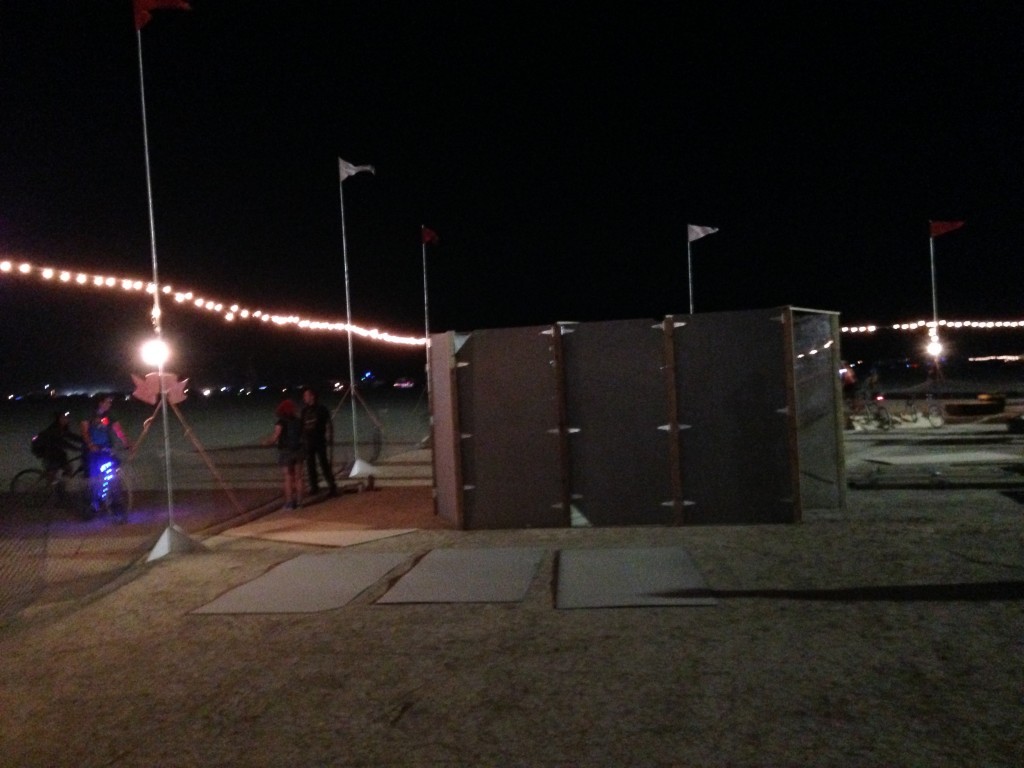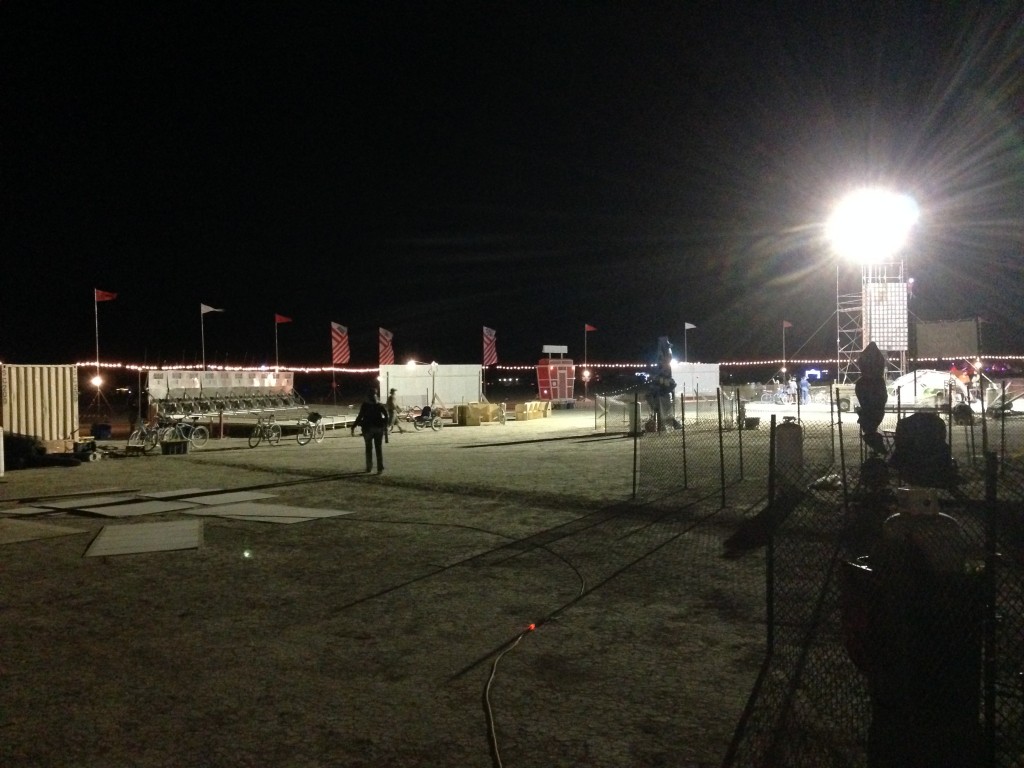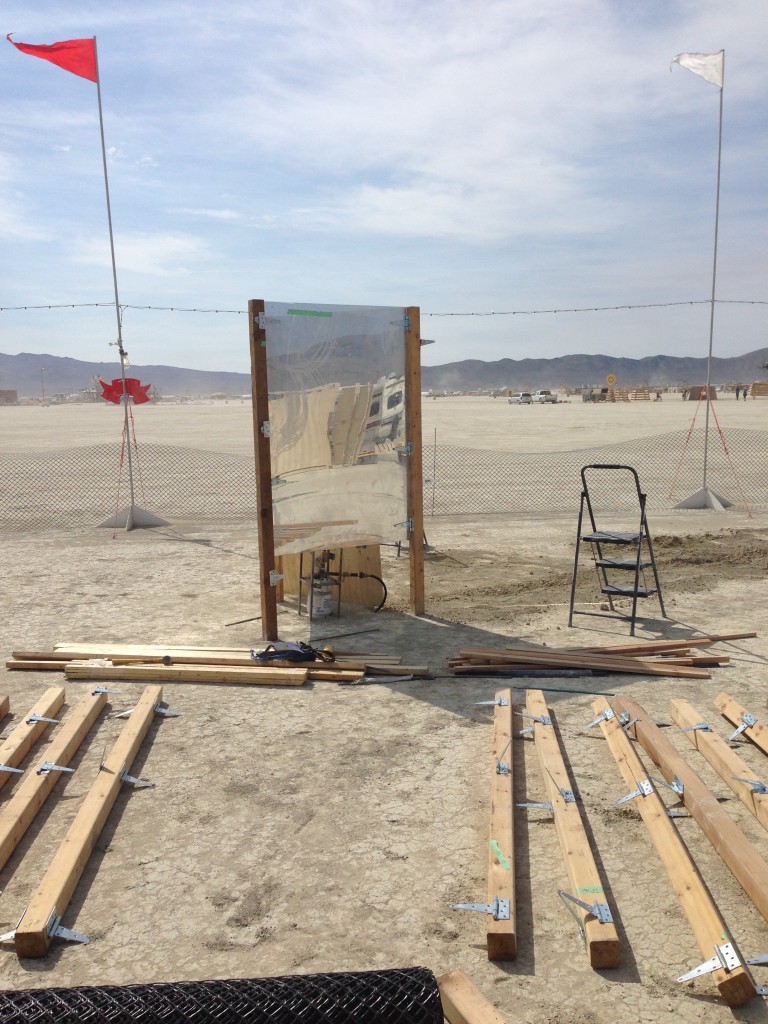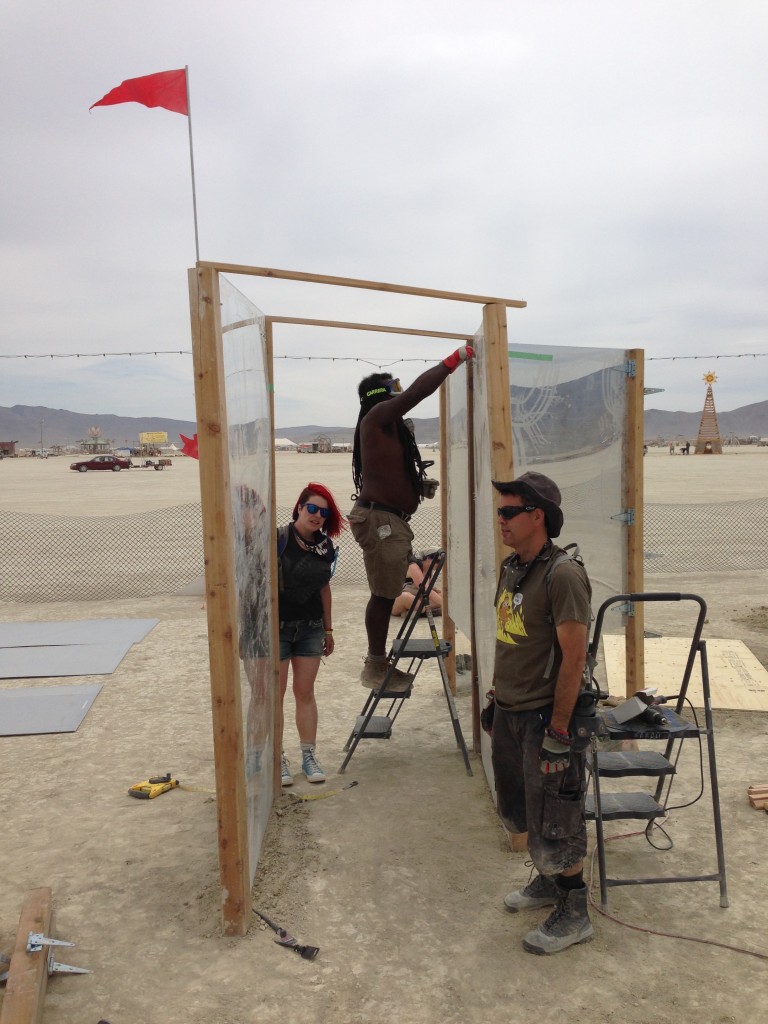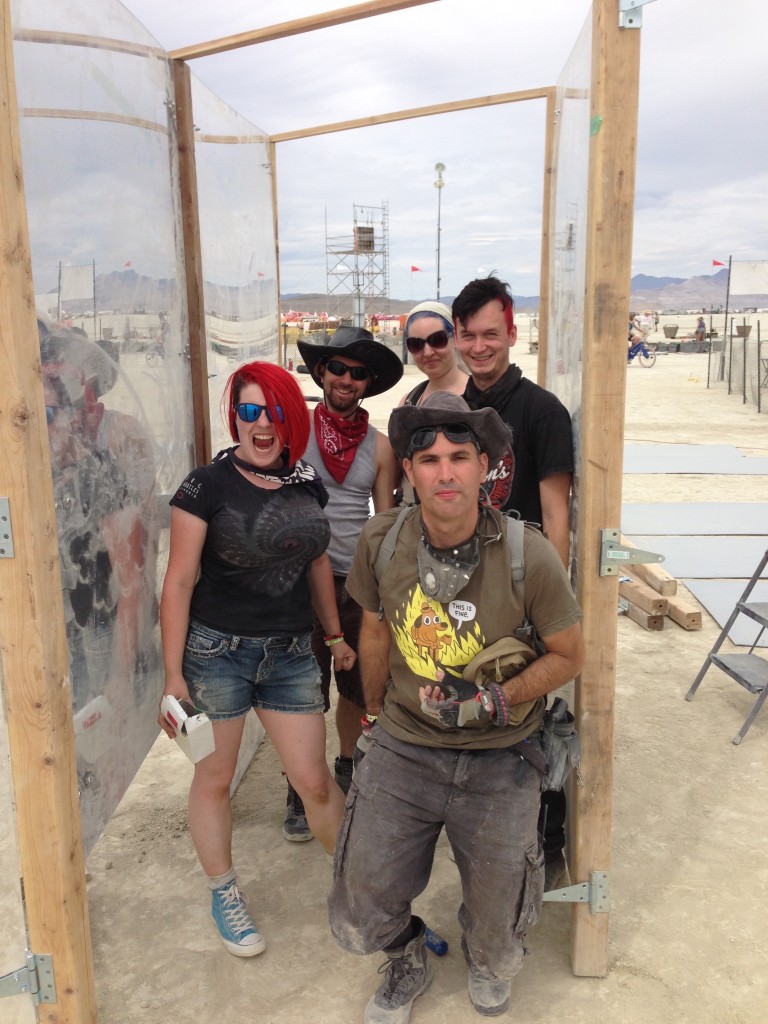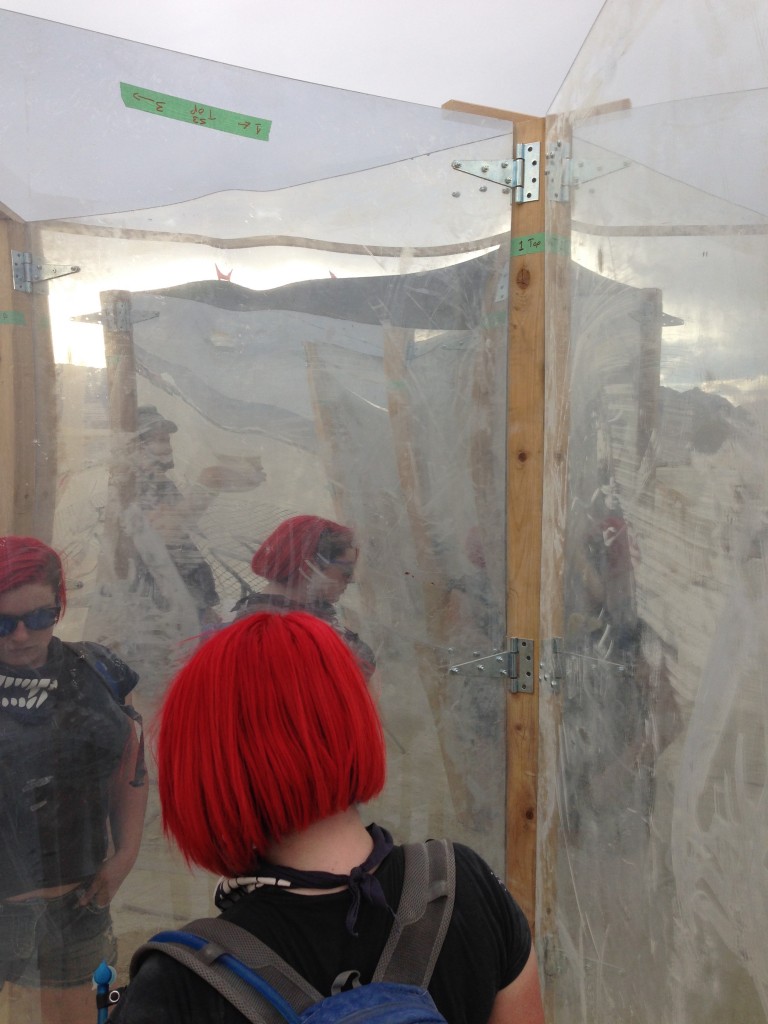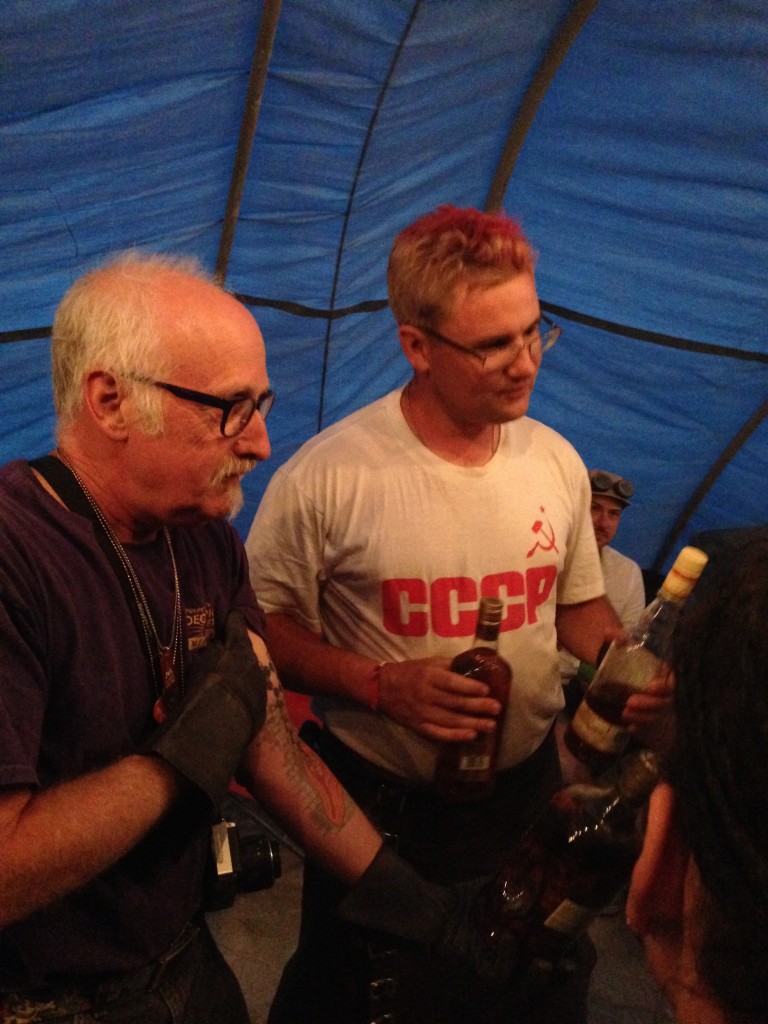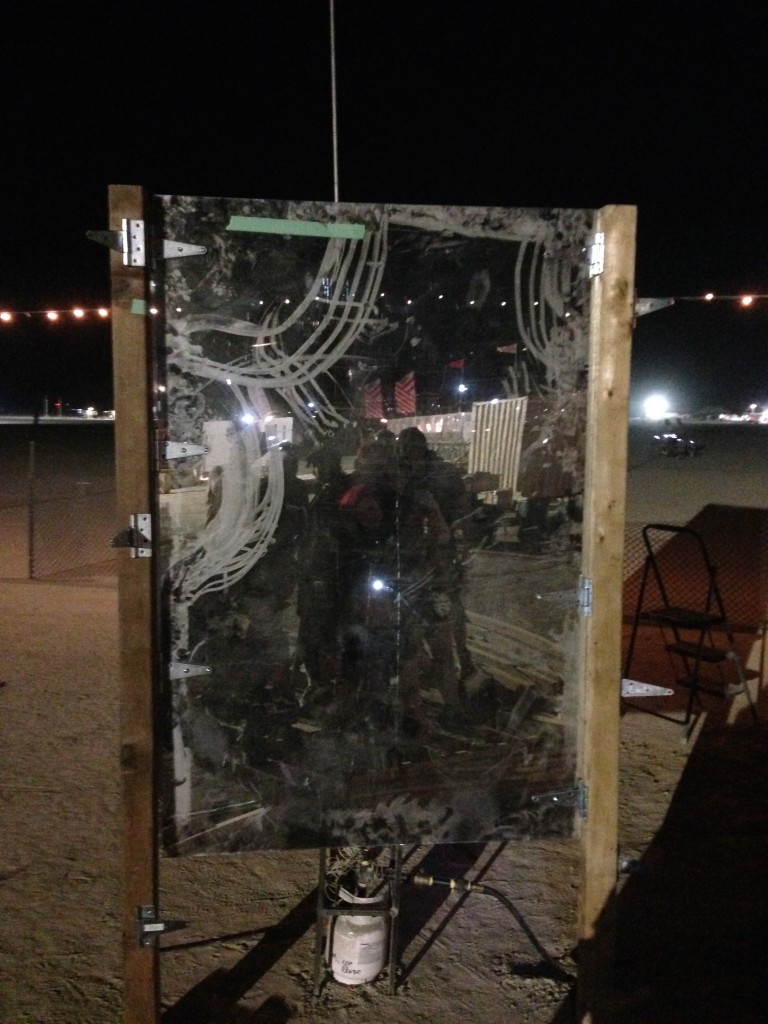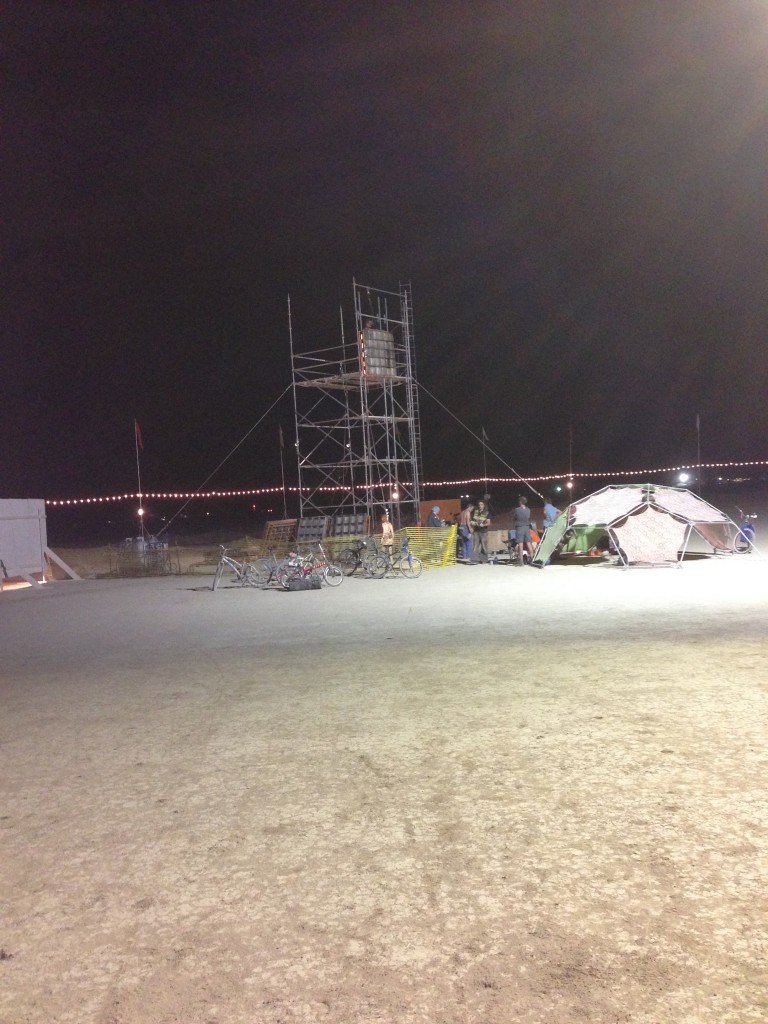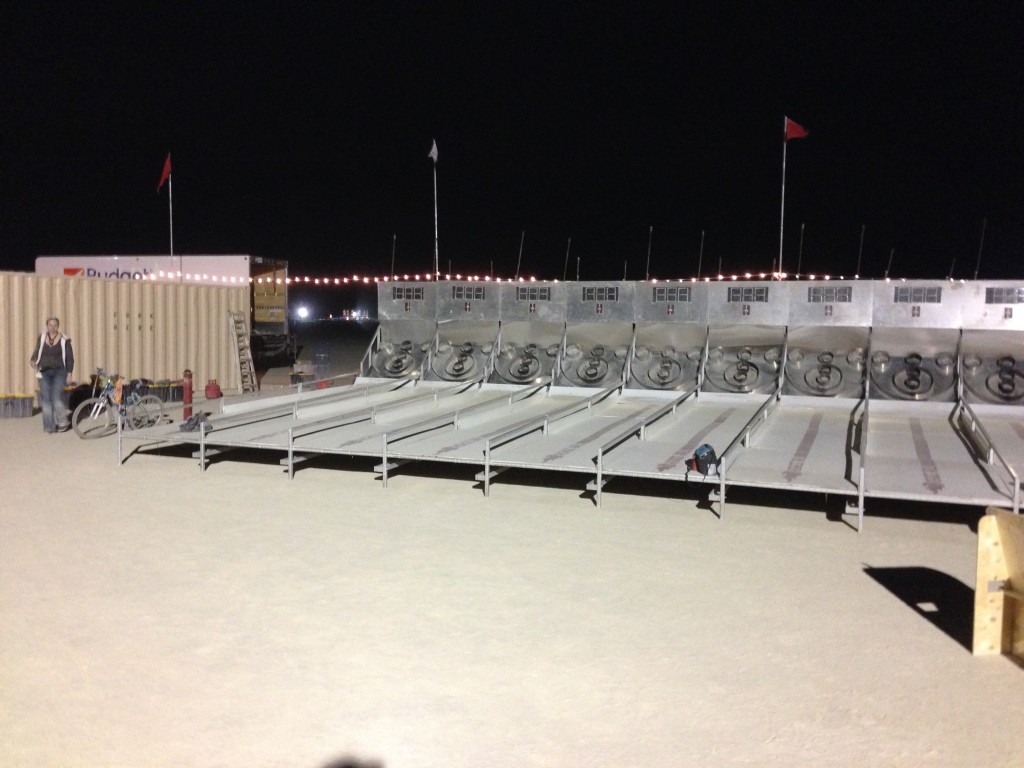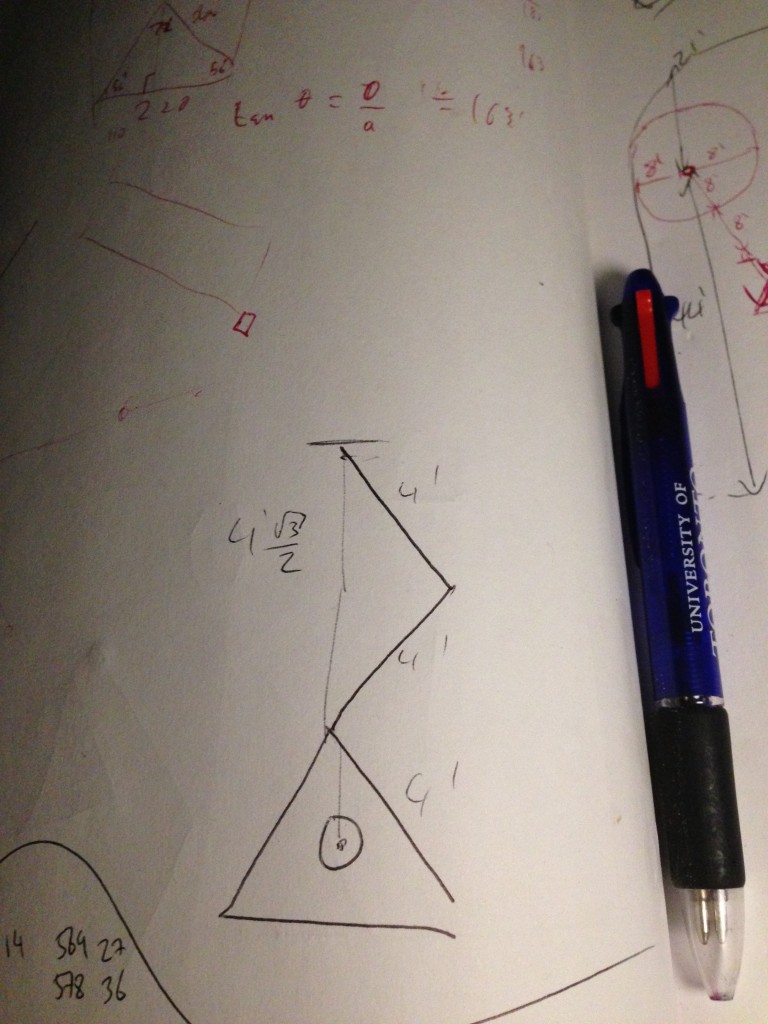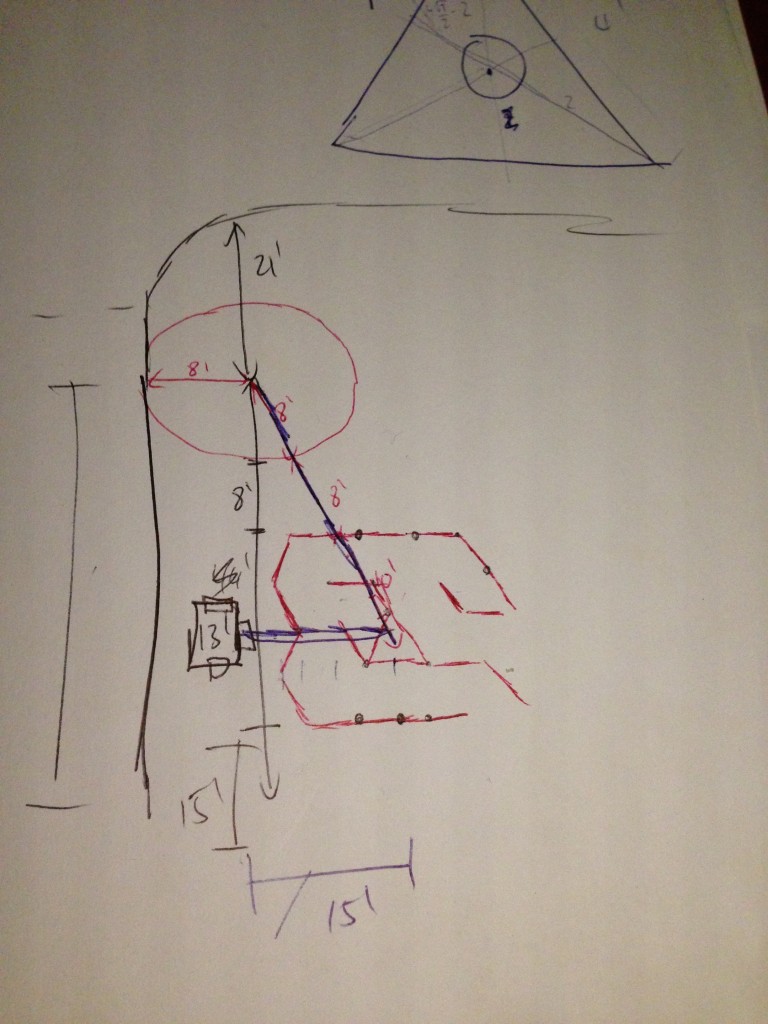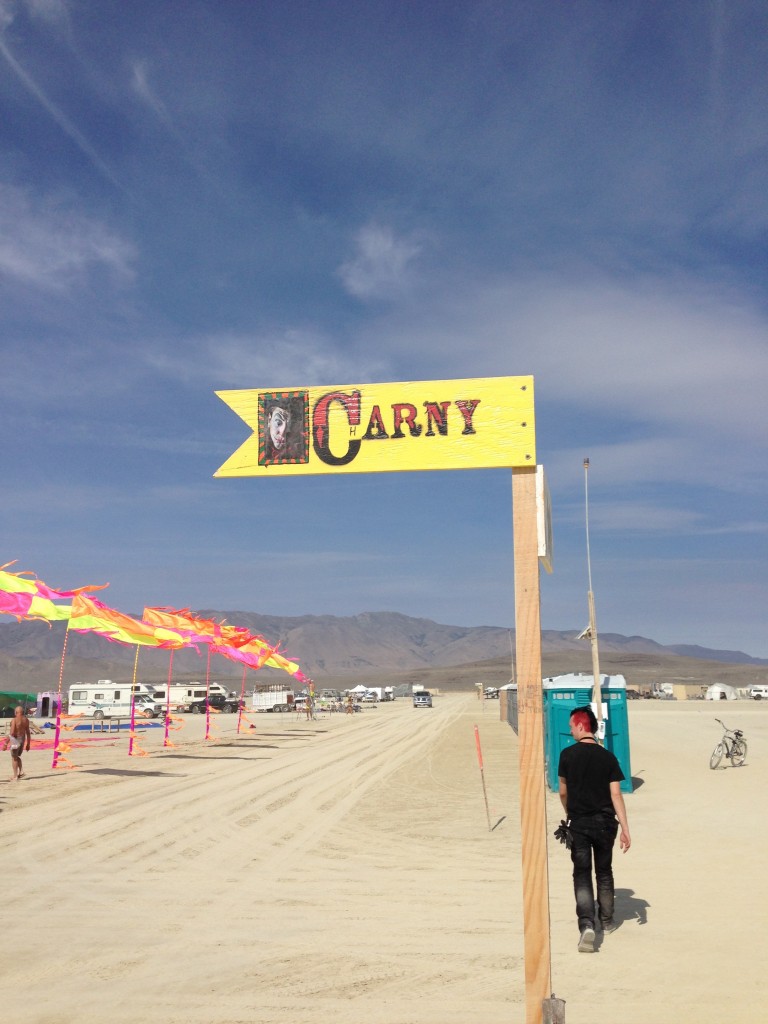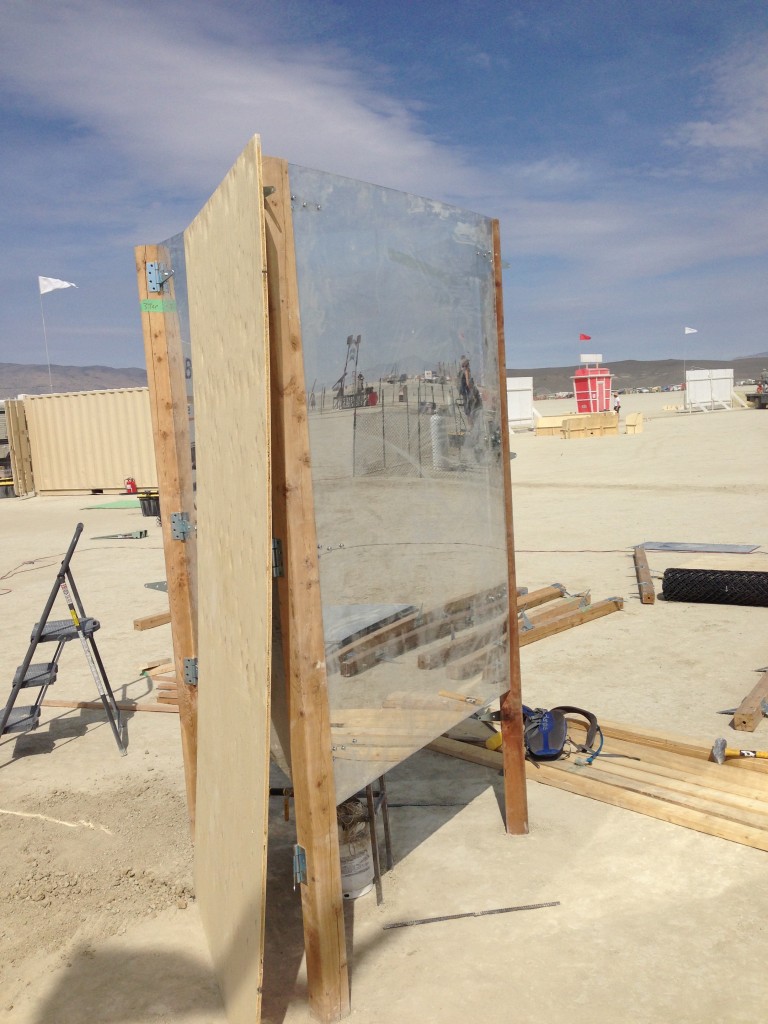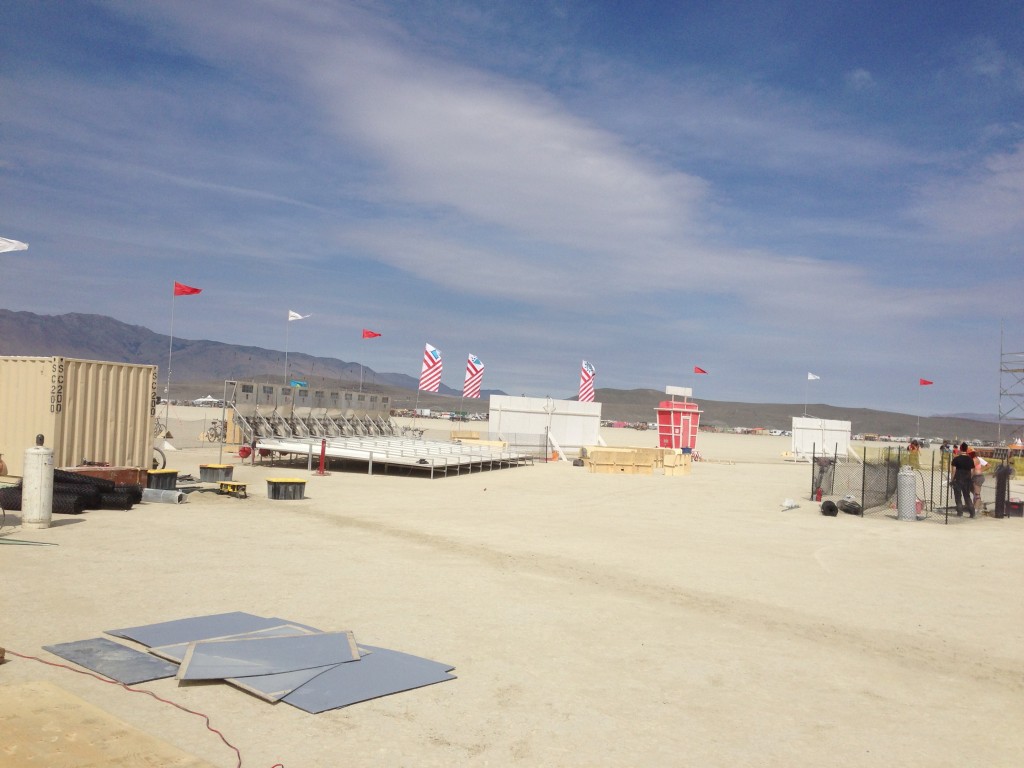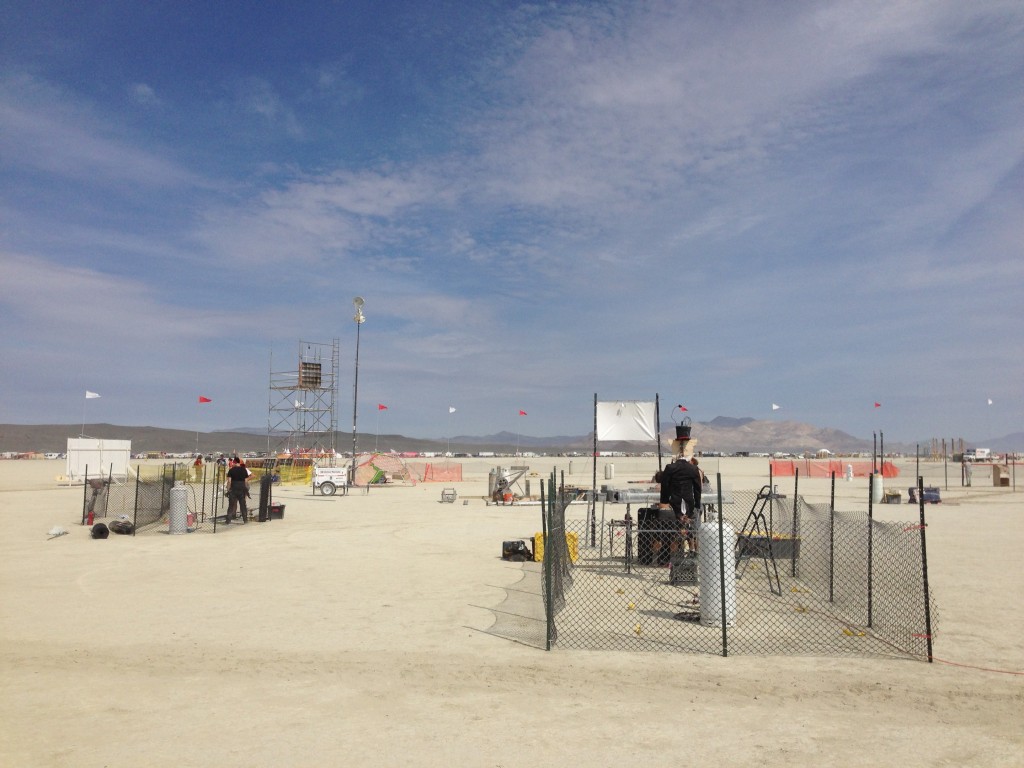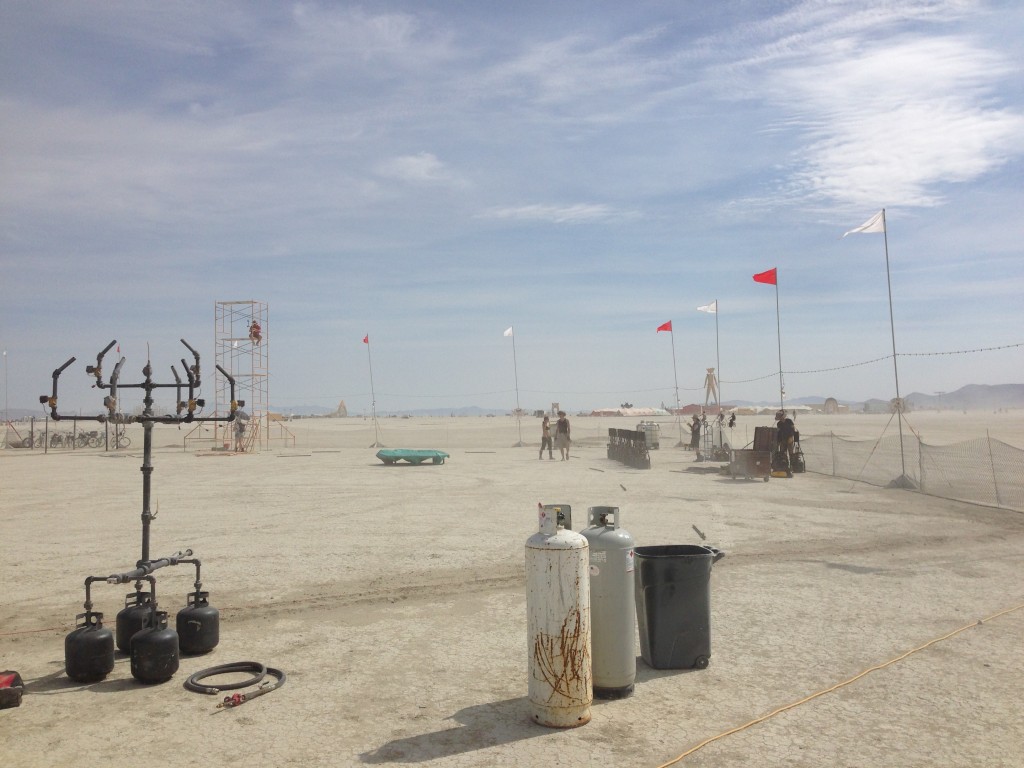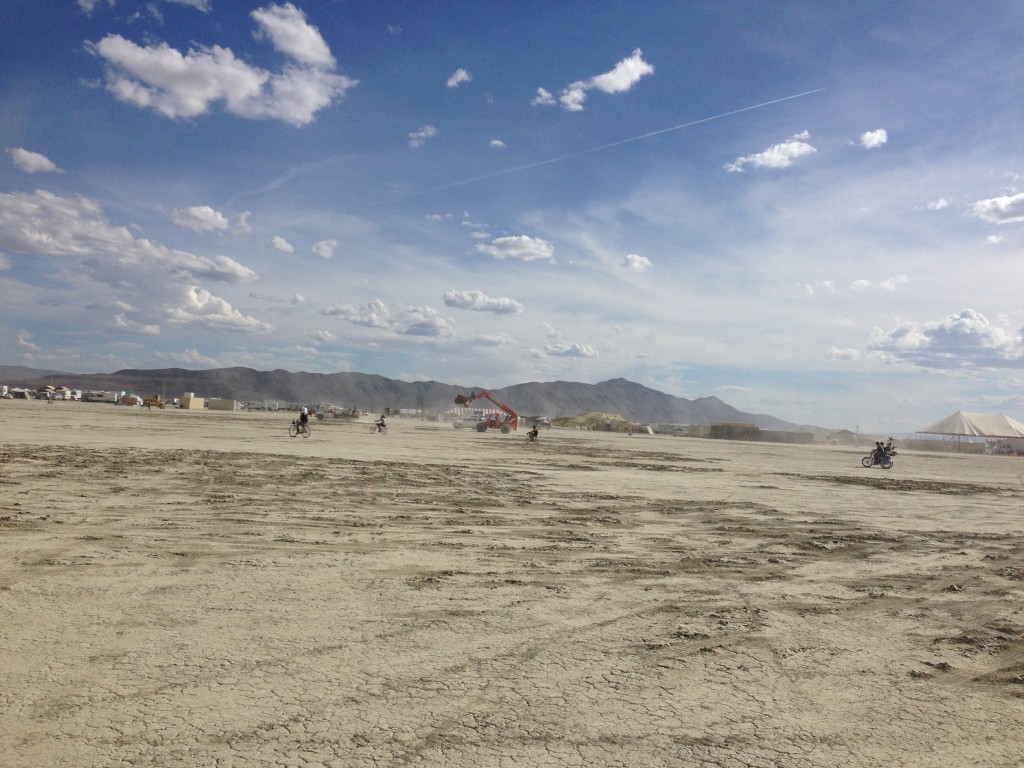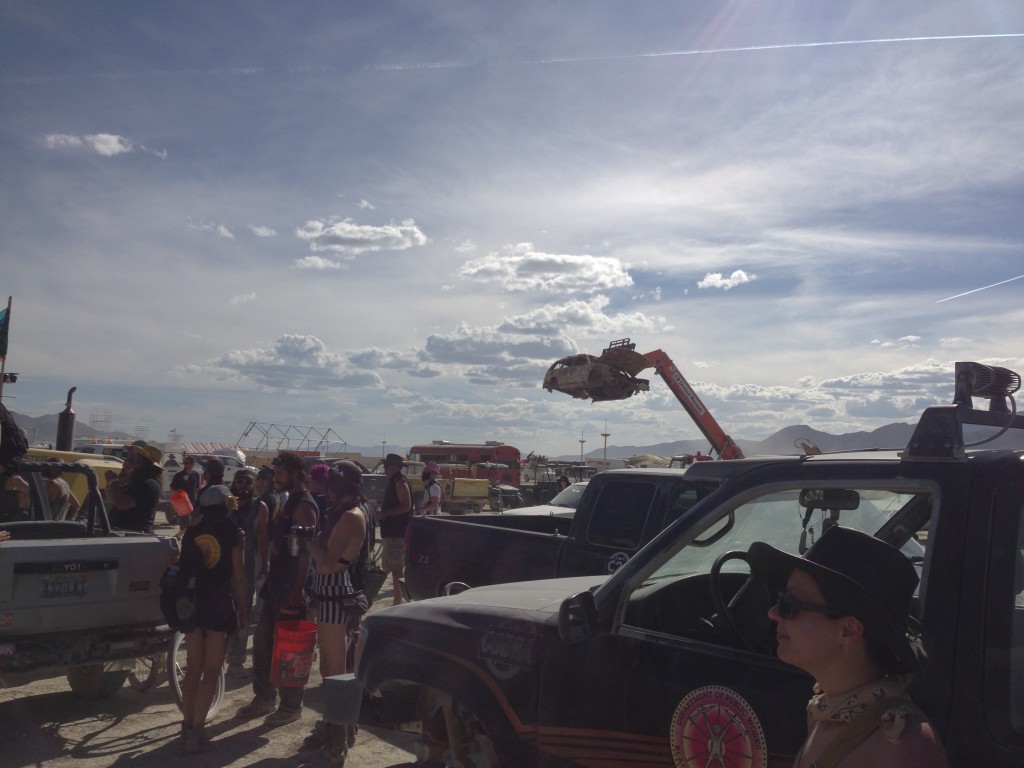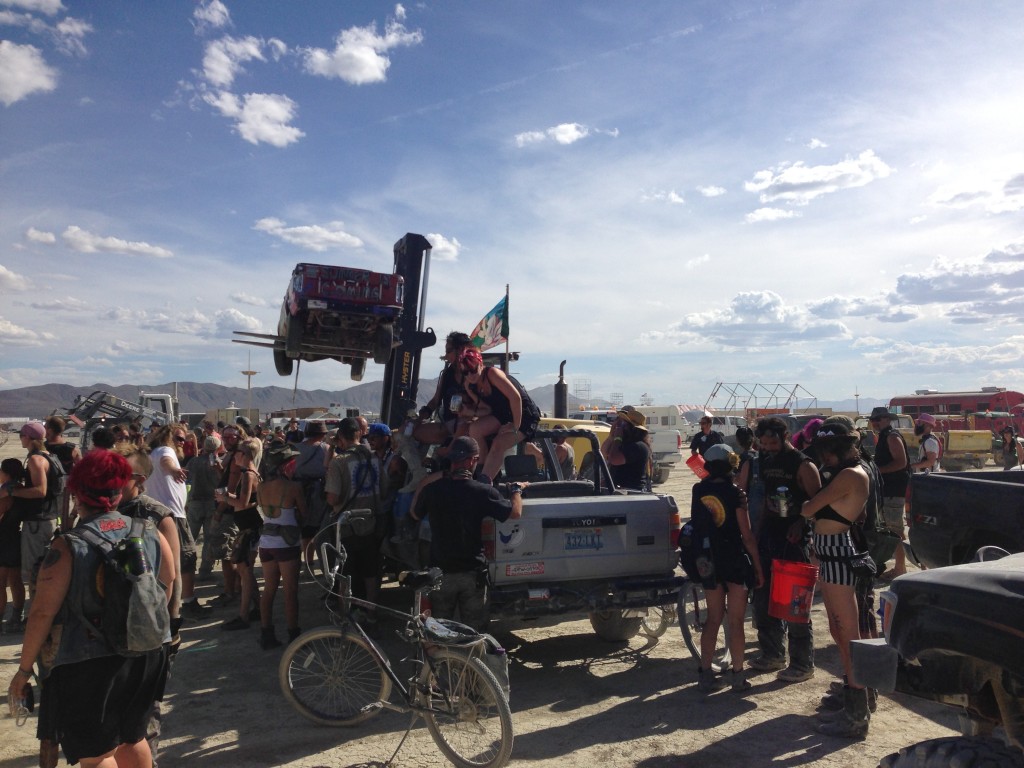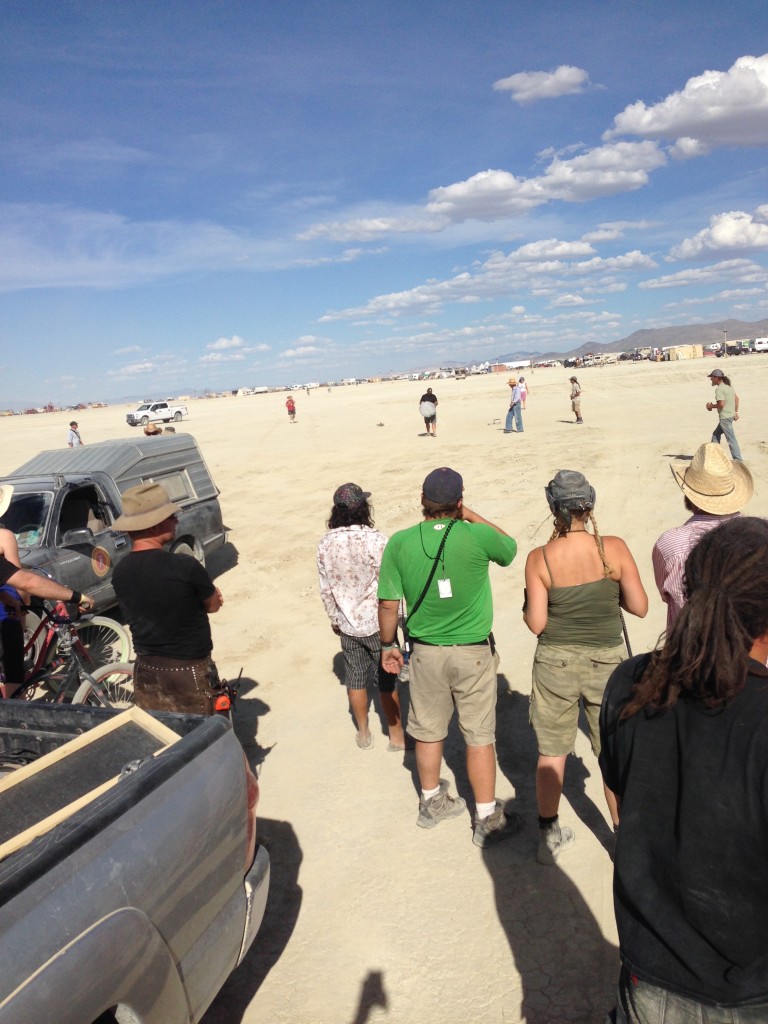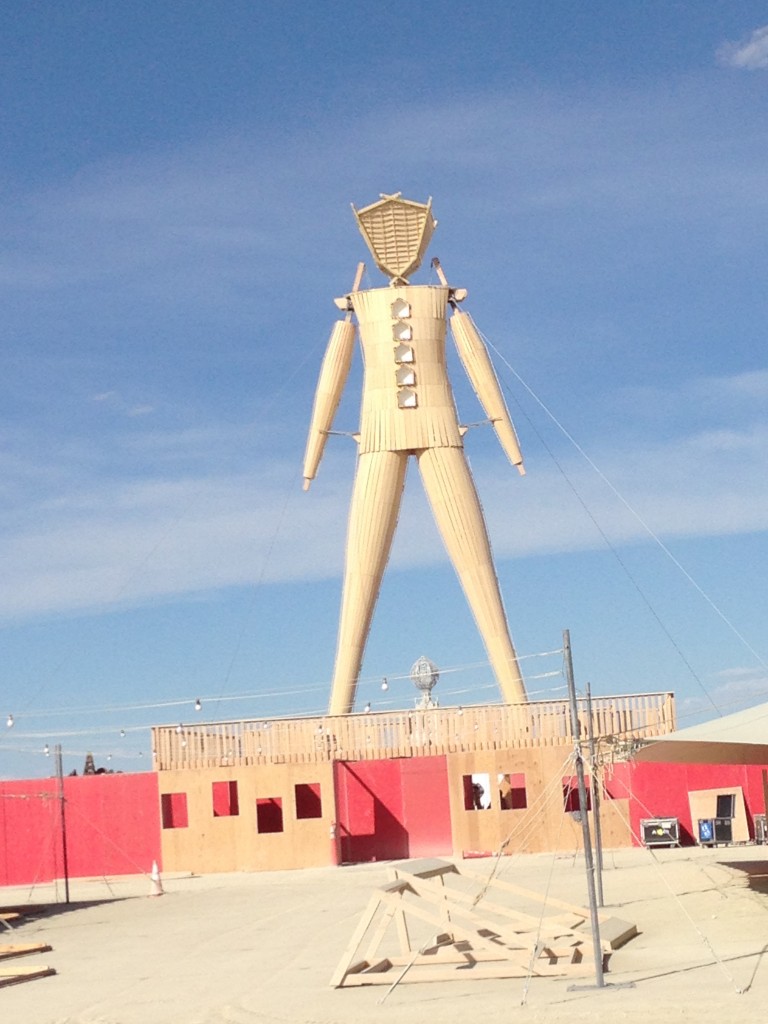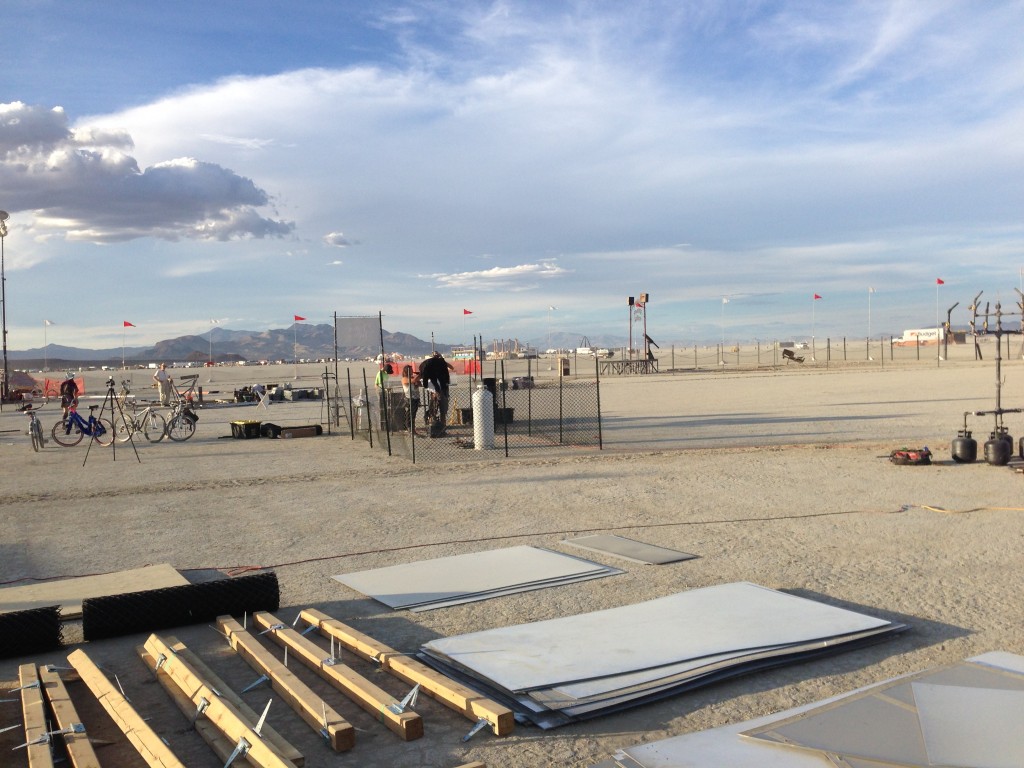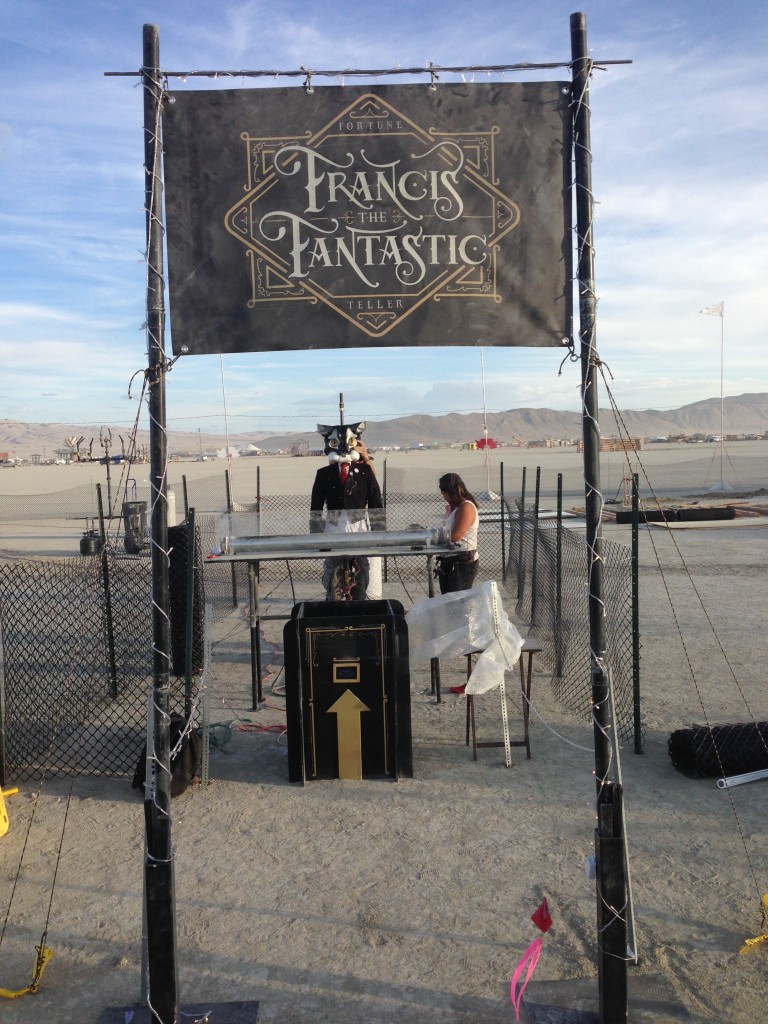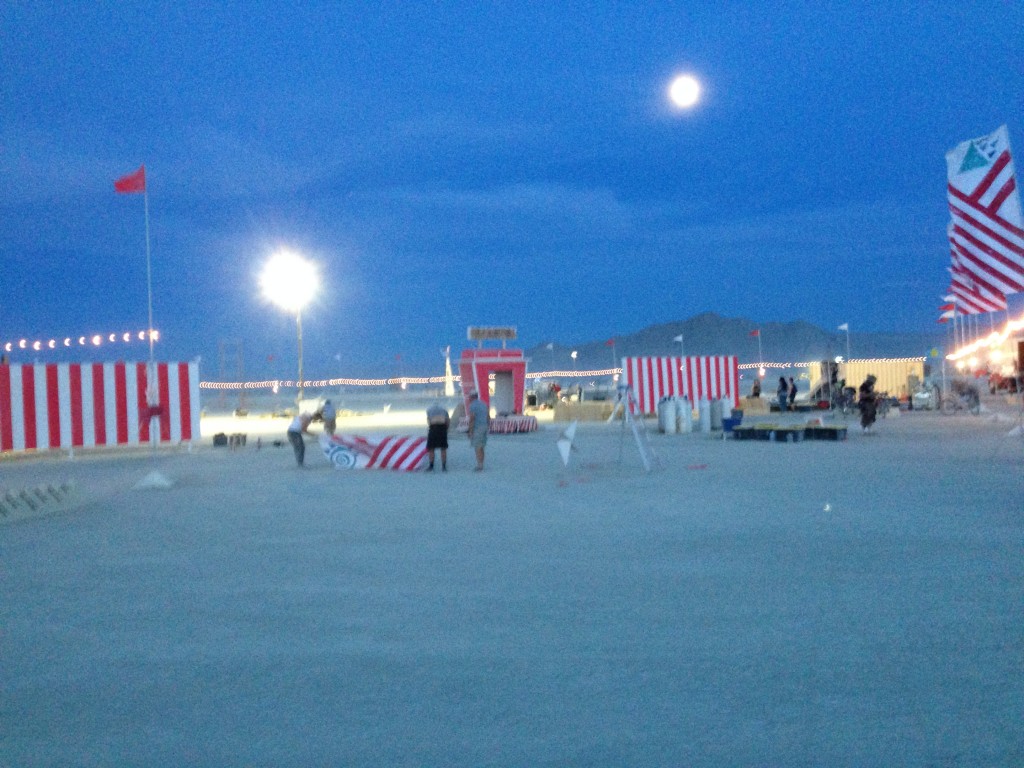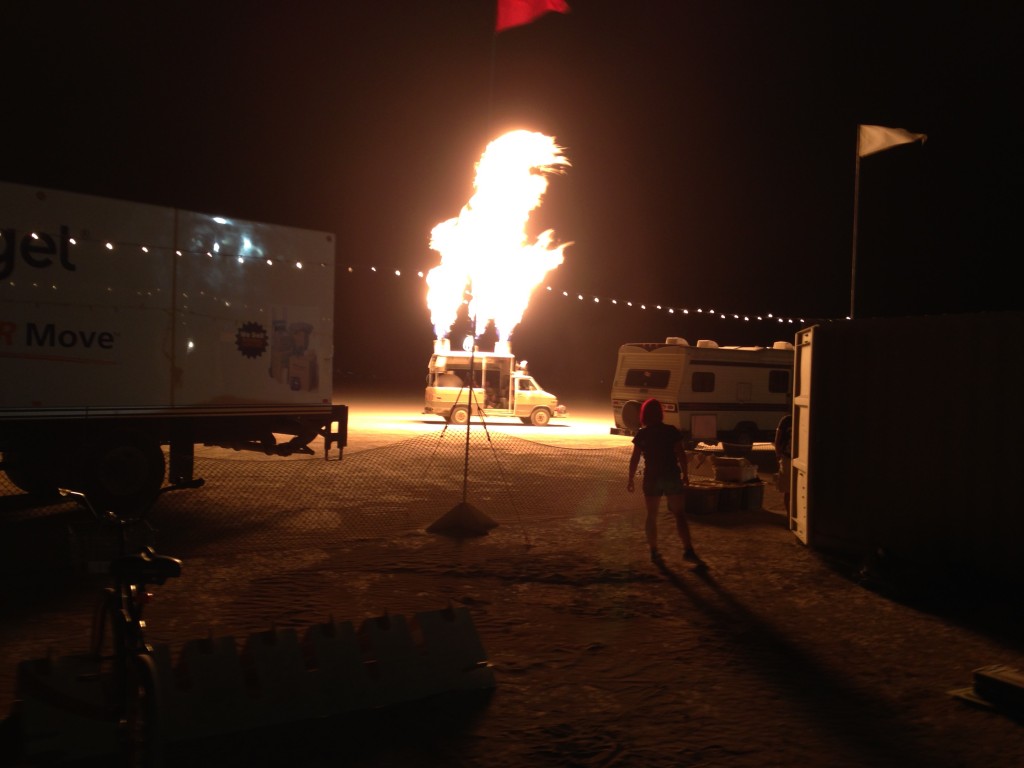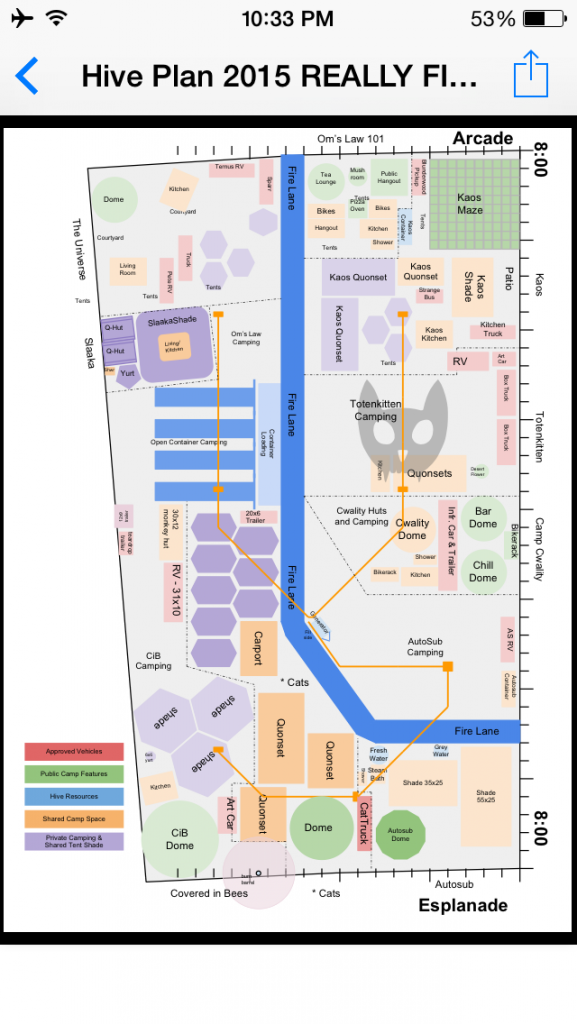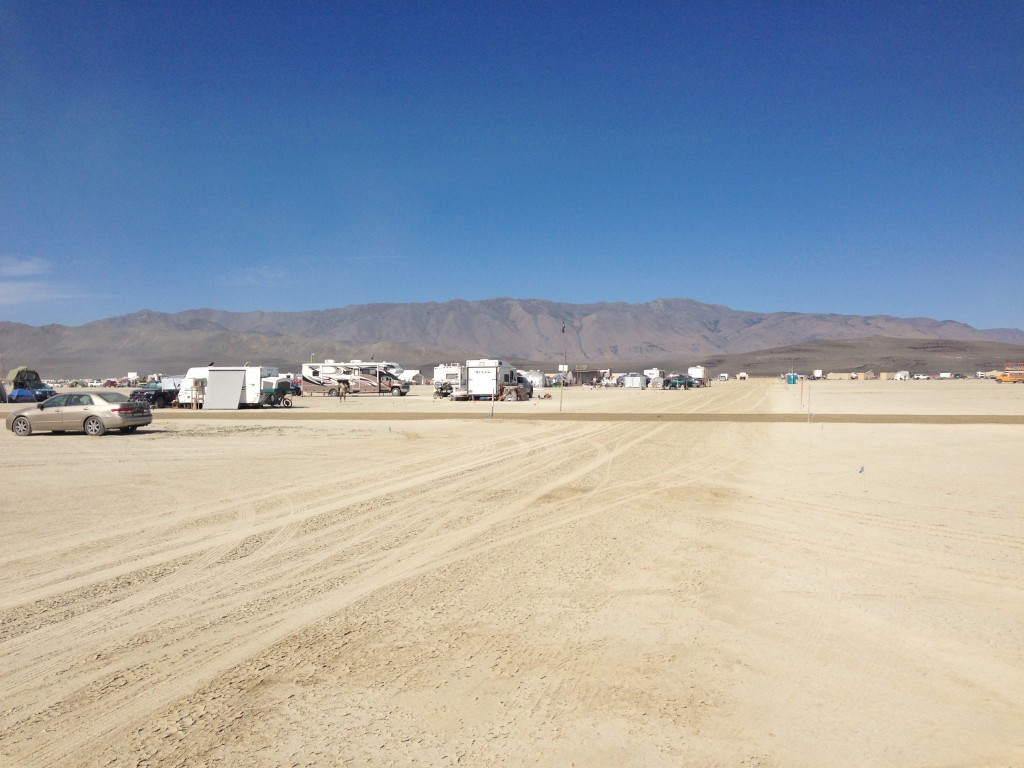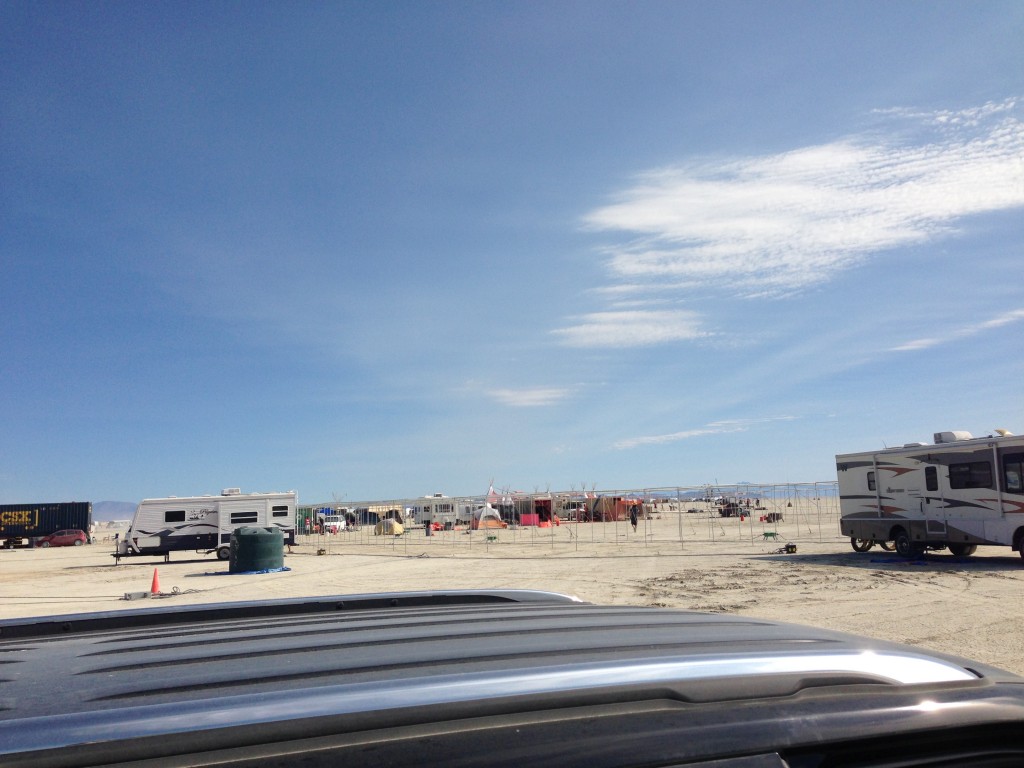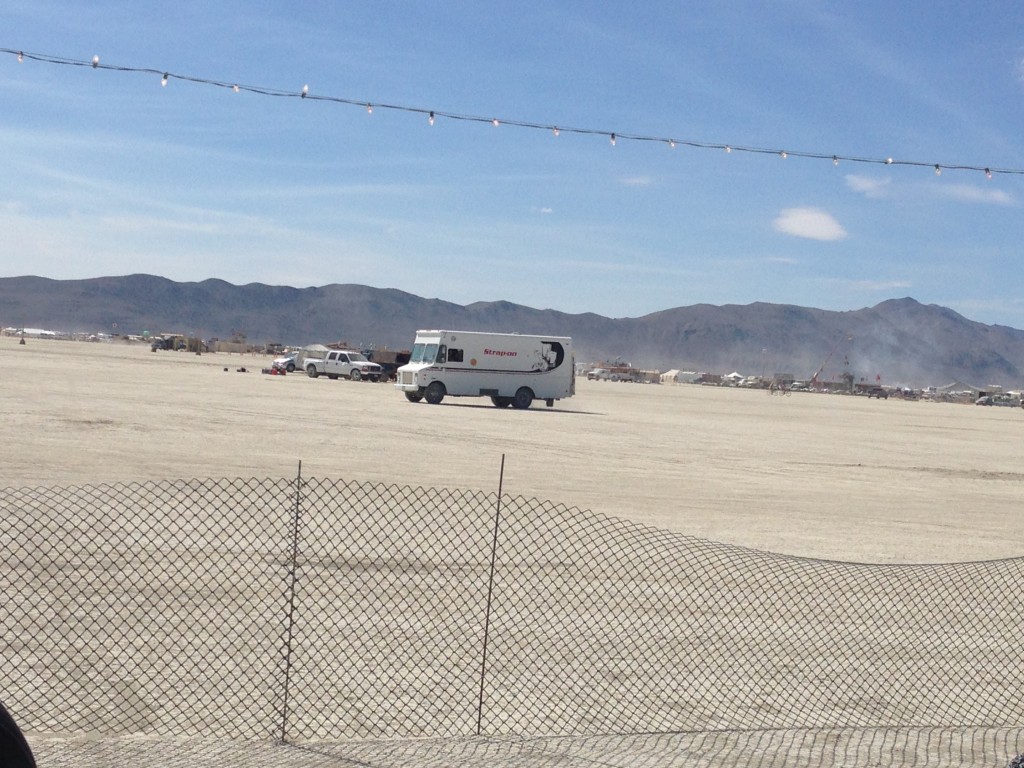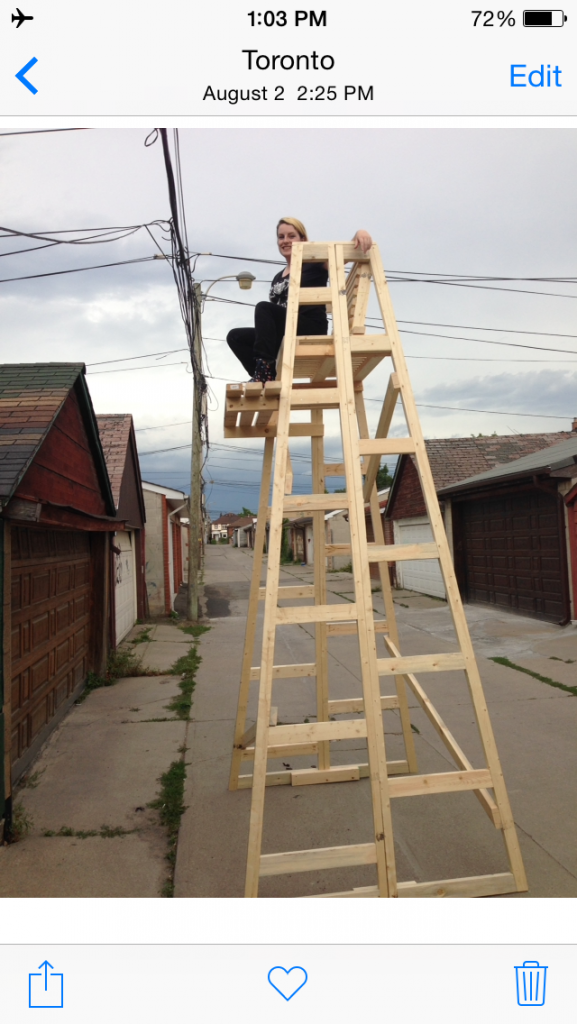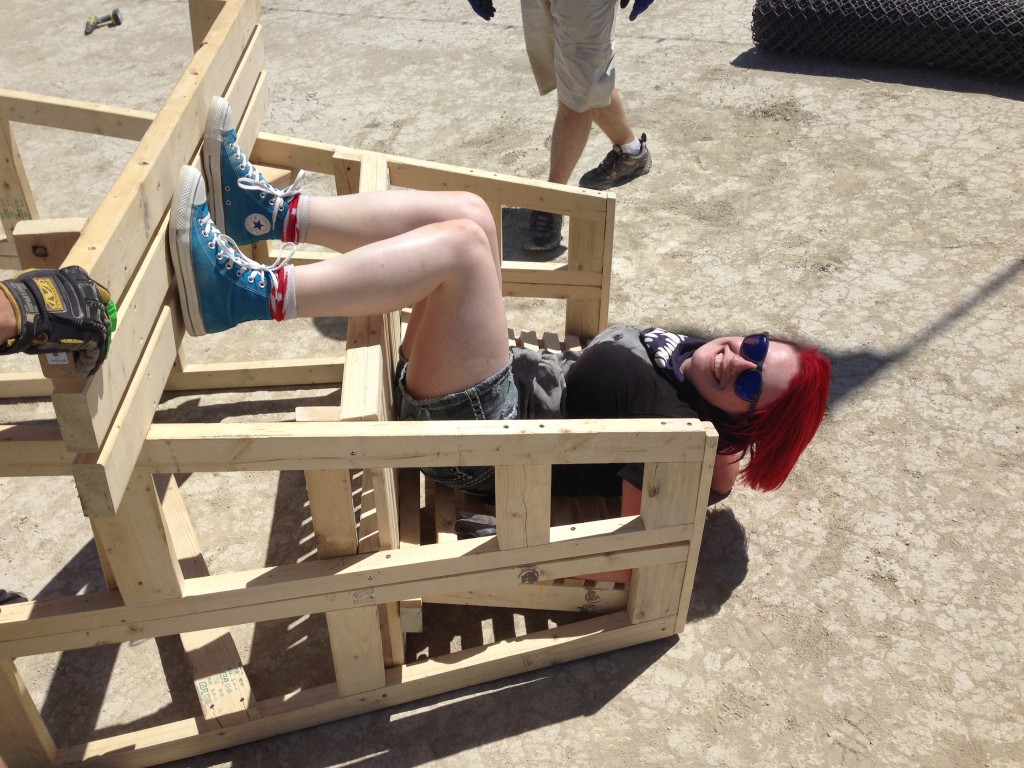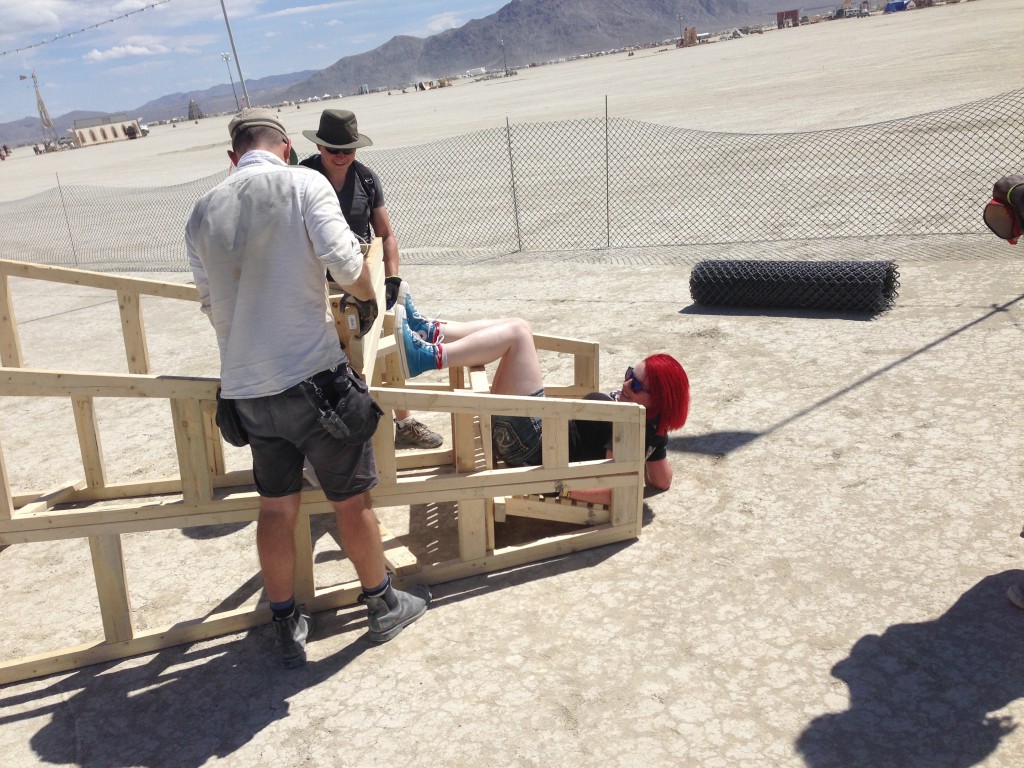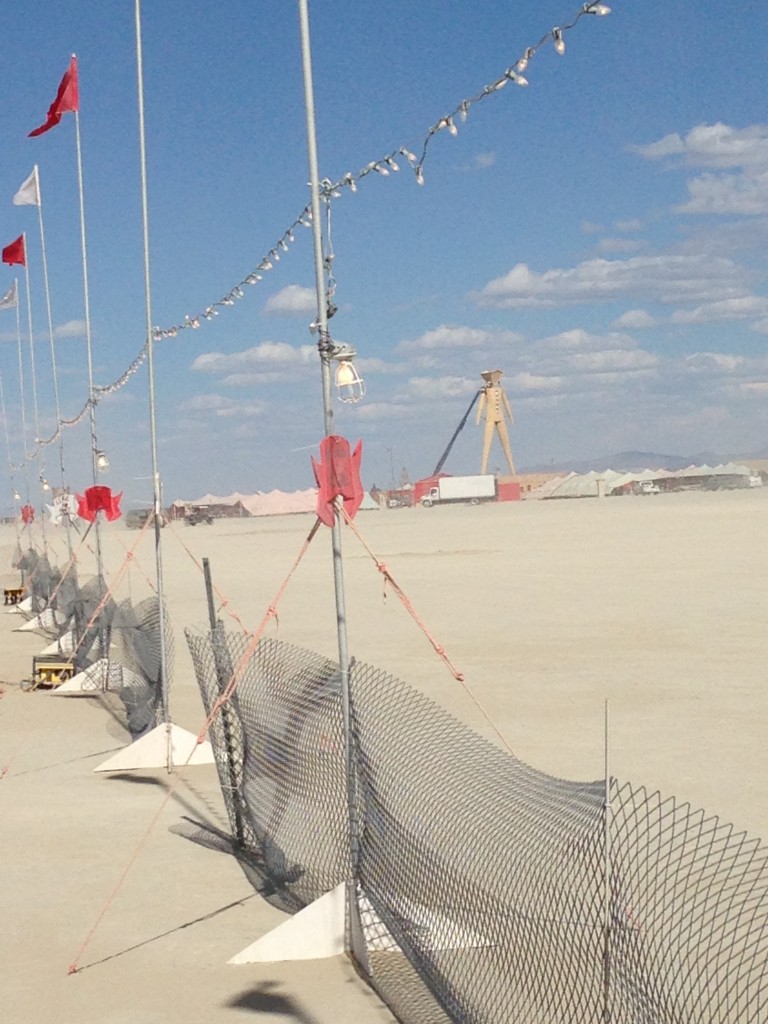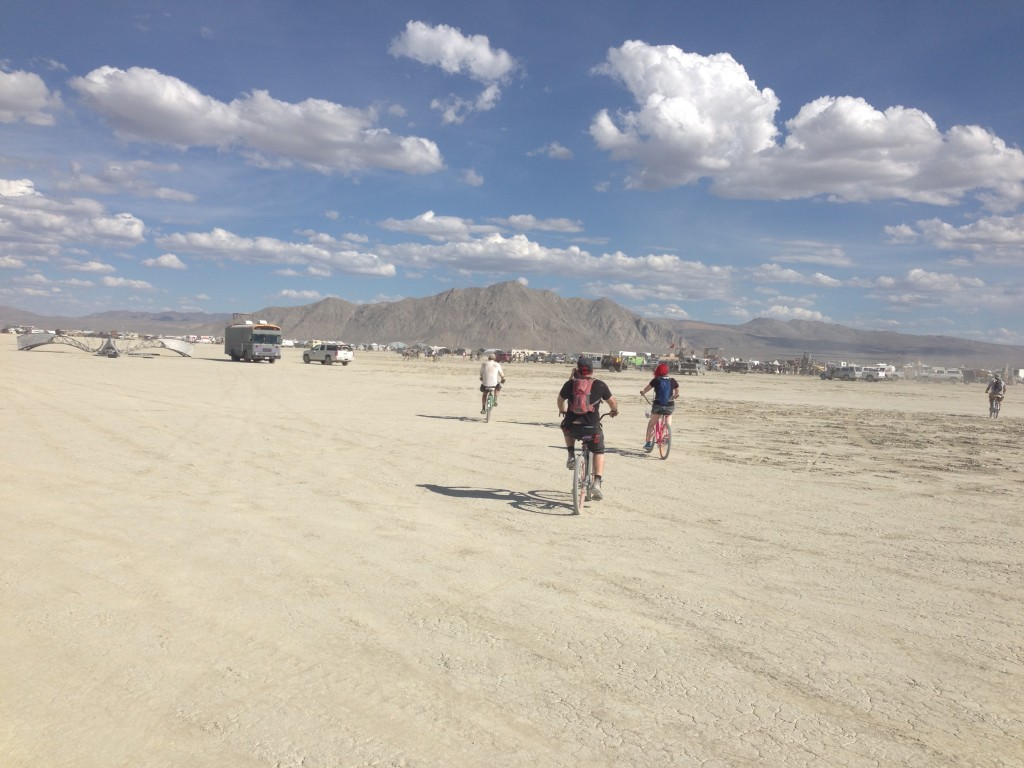In our last picture post, we talked about the incipient windstorm. It turns out that winds had reached 70km/h overnight.
Waking up, we saw this sequence of bike-ominoes:
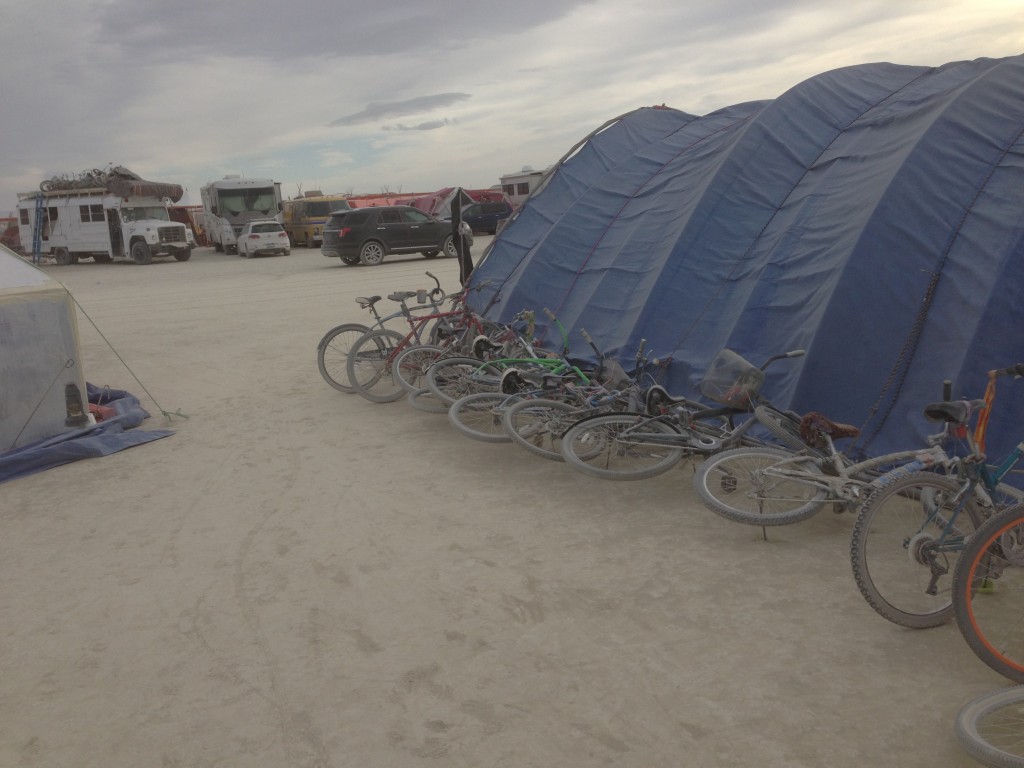
However, through luck or skill, our S’s trusty steed:
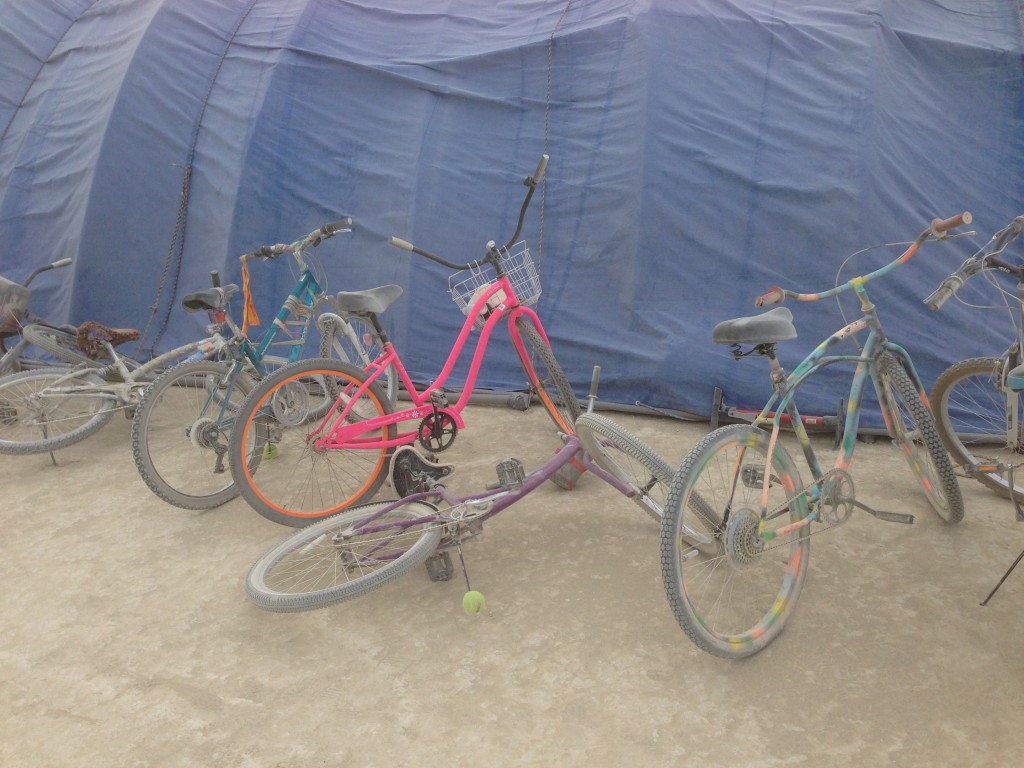
And mine:
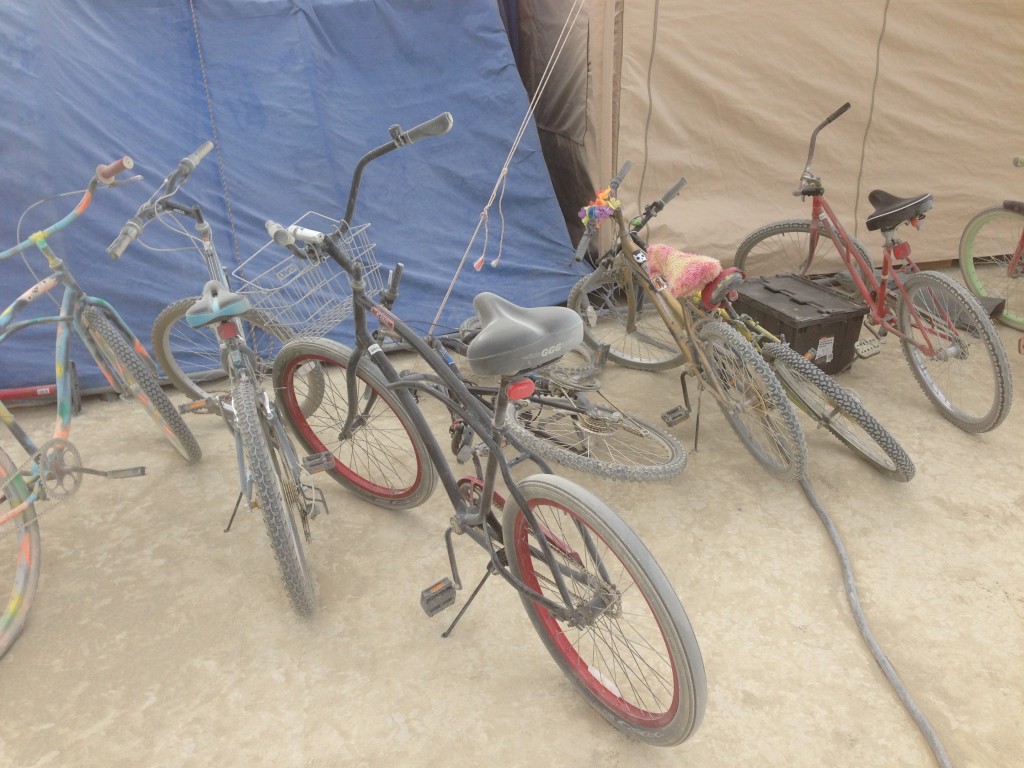
were still standing, which we chose to take as a fortuitous portent.
(Also, the fact that you can see the Quonset[1] still standing in the background is also a good sign. In 2013, it was taken out by a windstorm a couple days into Early Arrival. Interesting Times.)
Taking a quick portapotty break, we saw this inspiring message:
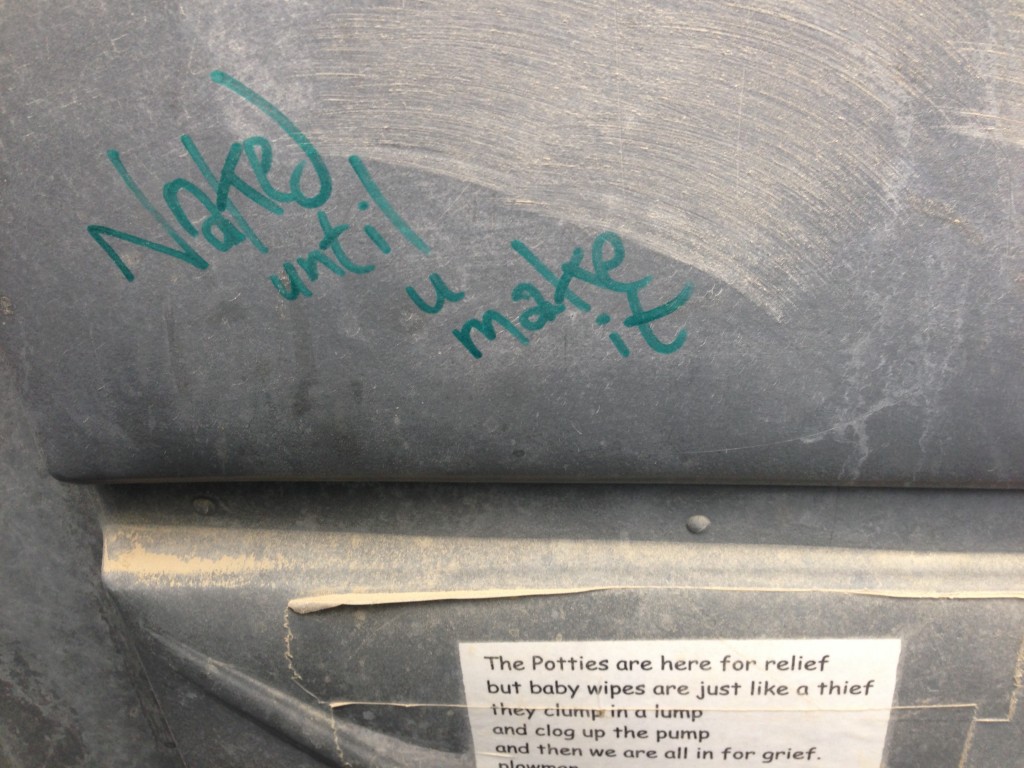
Evan, Dug, and I set out to assess the damage to the Charnival installation:
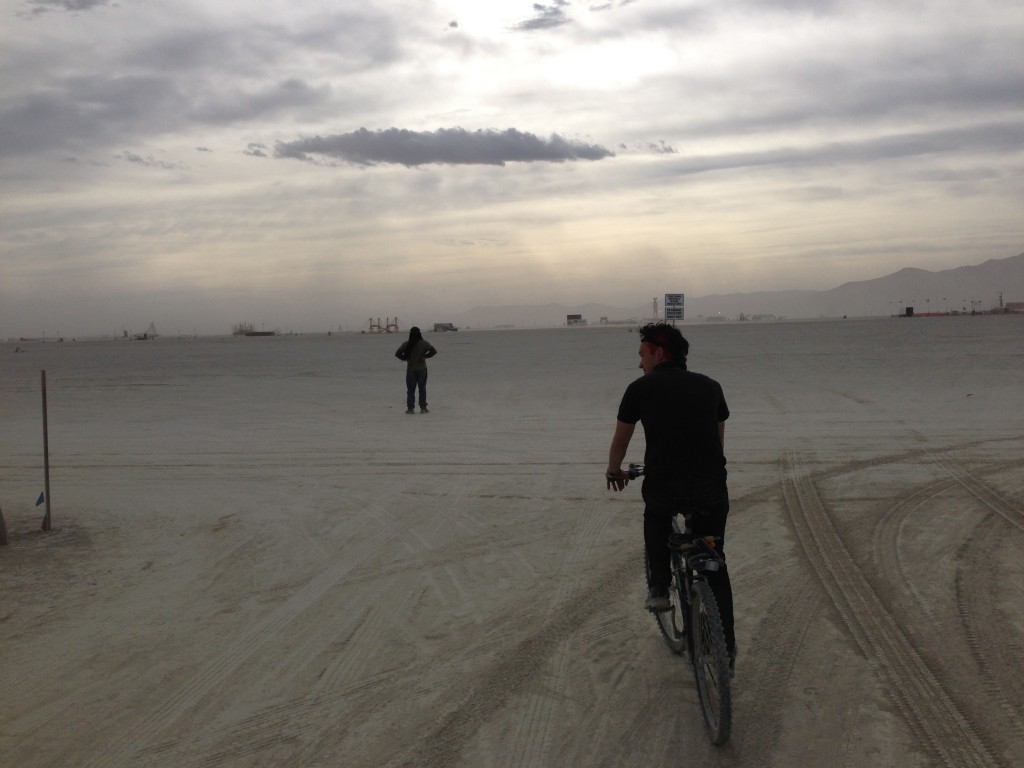
On the way, we passed a chair that was clearly off its rocker:
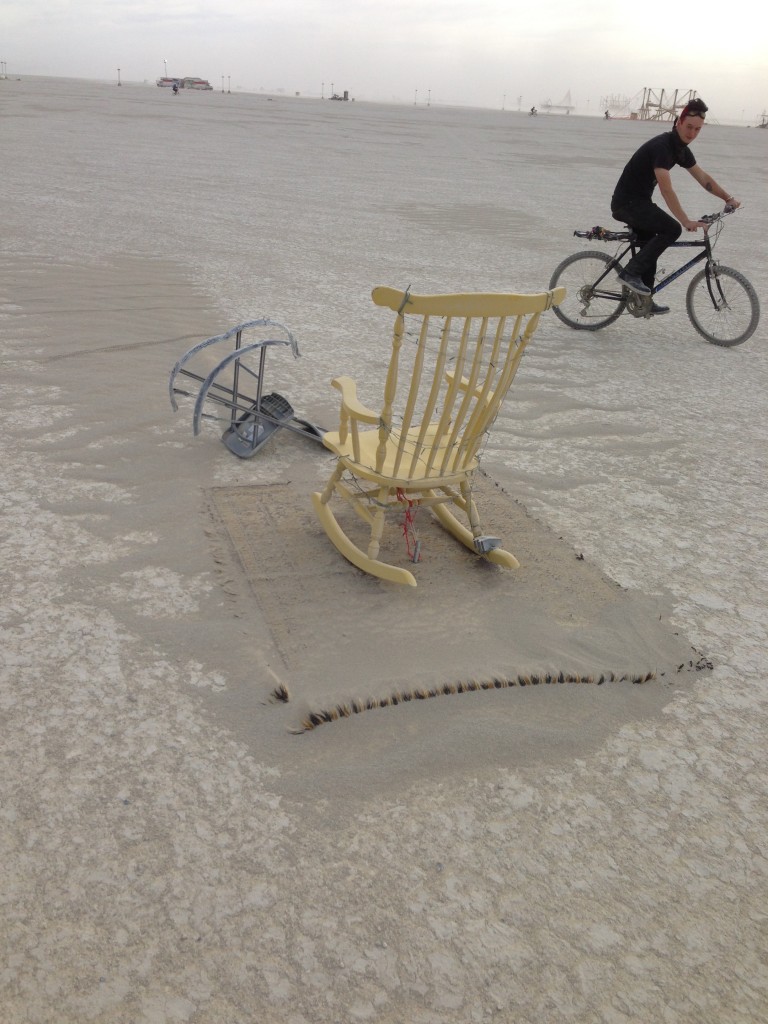
The Playa can seem simultaneously desolate and beautiful. For me, in this light, the desolation seems predominant (though still beautiful):
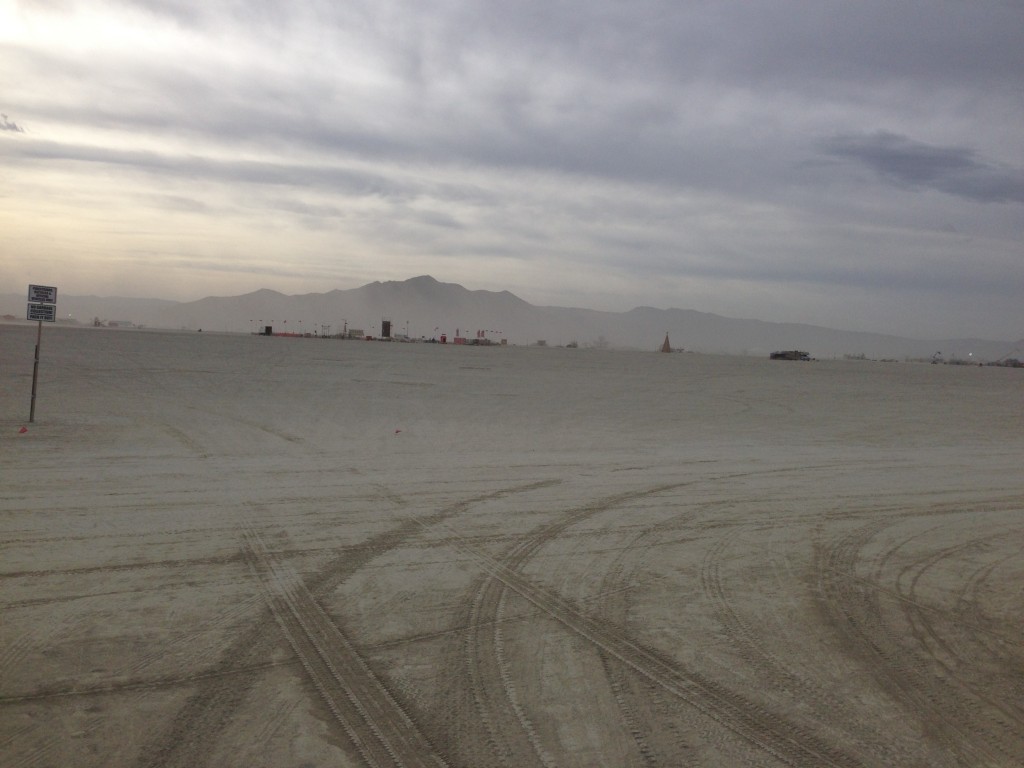
Late last night, we had decided to test our luck with the windstorm by piling every dense object we could find (fence posts, socket sets, toolboxes full of screws, fire extinguishers) on top of our two yellow/black bins of tools/fabric/etc…
And it worked! It was all still there after the 70km/h windstorm! (Although, if you’d been hefting those fence posts all day, you would probably understand why.):
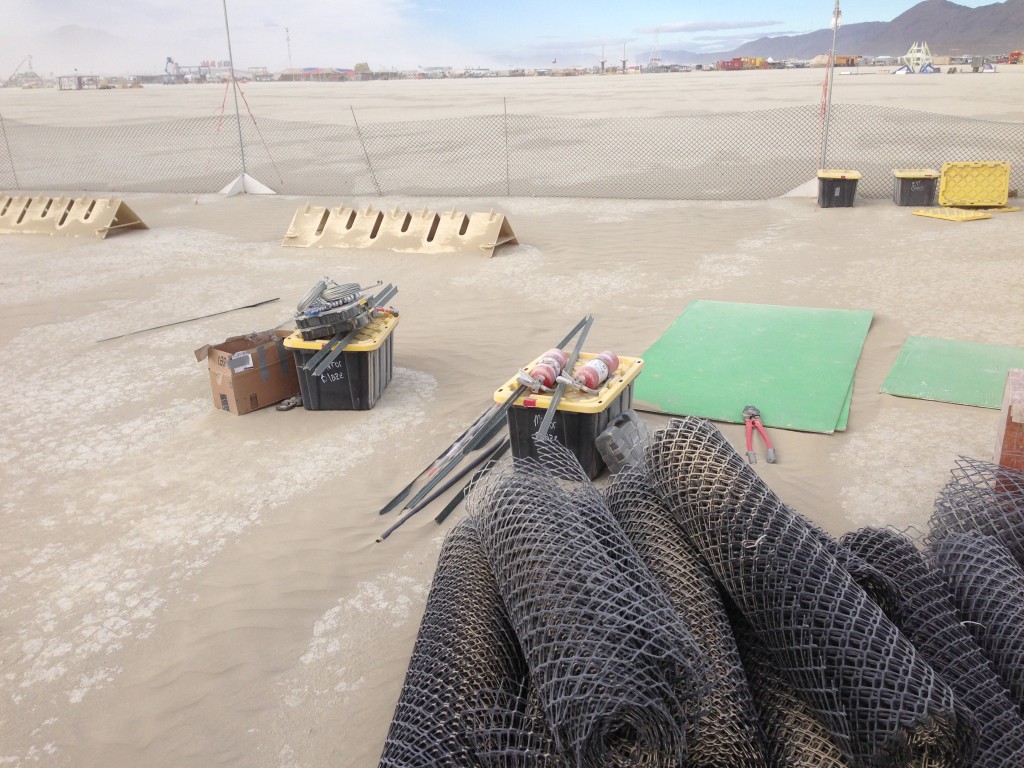
And then the moment of truth. Had Mirror Blaze itself survived, or would have extra days of back-breaking work to repair things? Luckily (or perhaps skilfully), it was still proudly standing, flying the flag[2]:
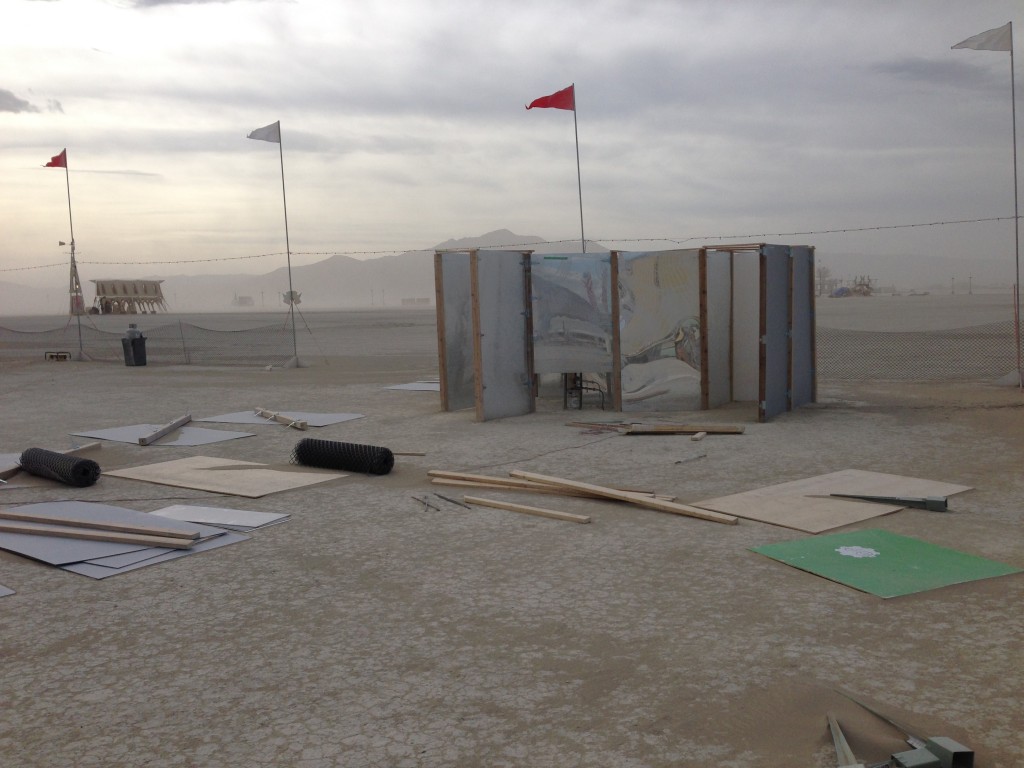
Riskee Ball was also okay, but the dirigible fleet seemed to have knocked over one of the Charnival walls:
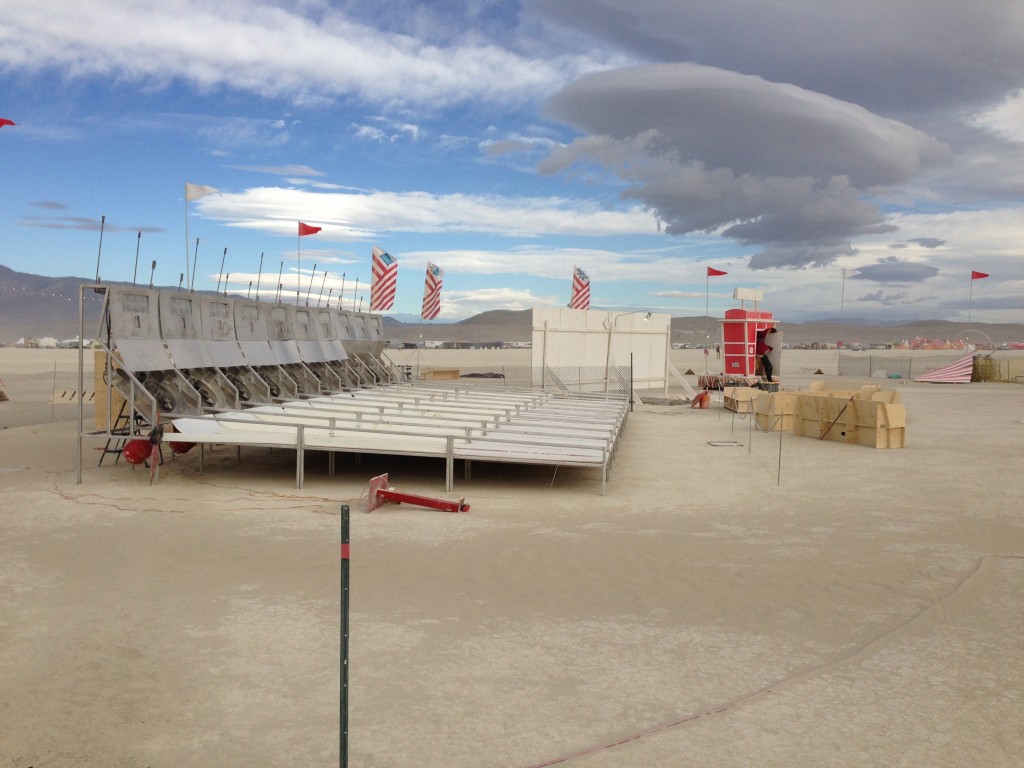
More exciting wind effects (and non-effects) in our next installment!
[1]For those who care, the Quonset was a skeleton of 2″(I think) grey PVC piping bent into an approximate half-cylinder, with a skin of tarp. The skeleton pipes were held in place by rebar pounded into the ground (I think candycane, 3′). There were also multiple long ropes helping to hold things together. This is a somewhat similar design.
[2]It’s not actually flying the flag there. It’s a trompe l’oeil.


